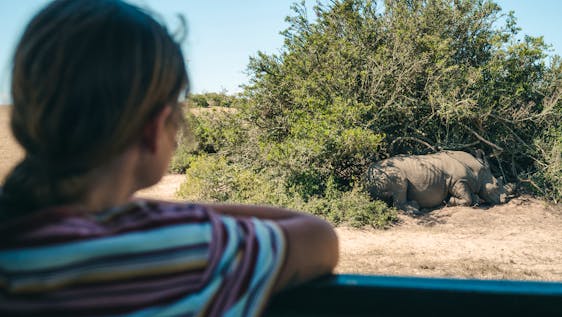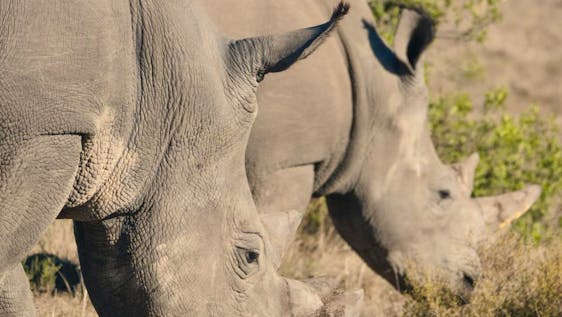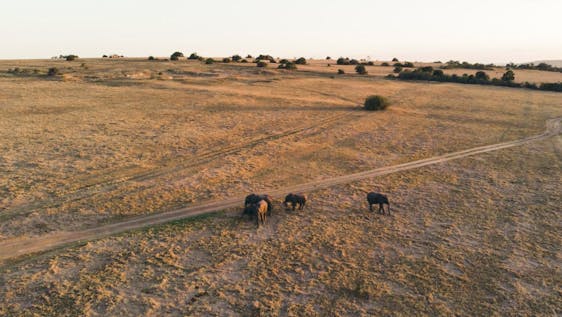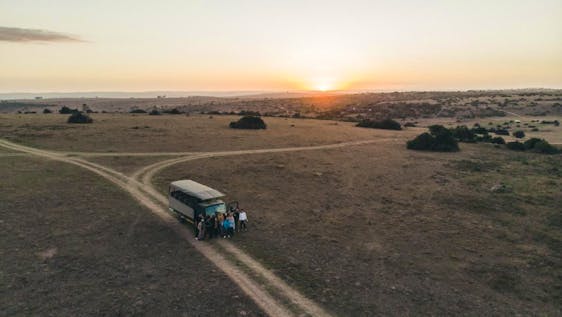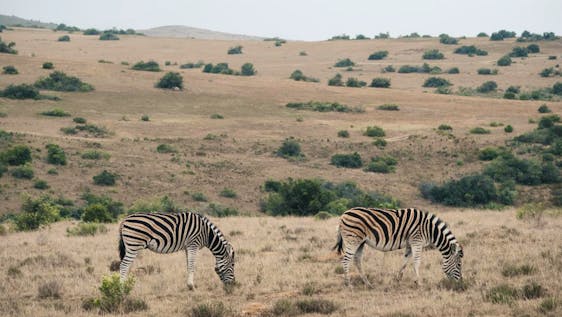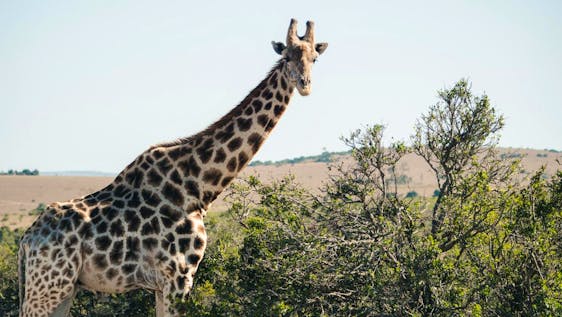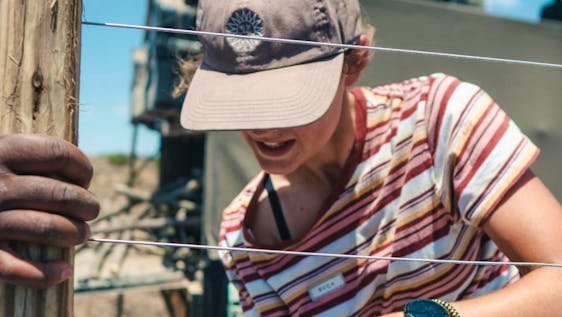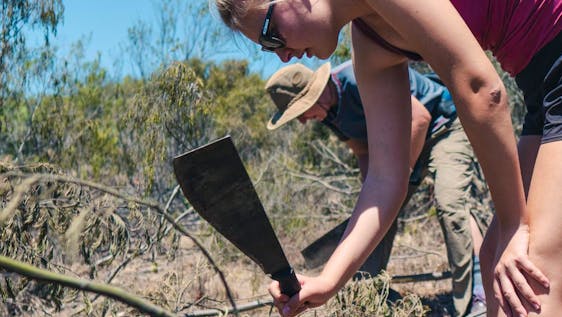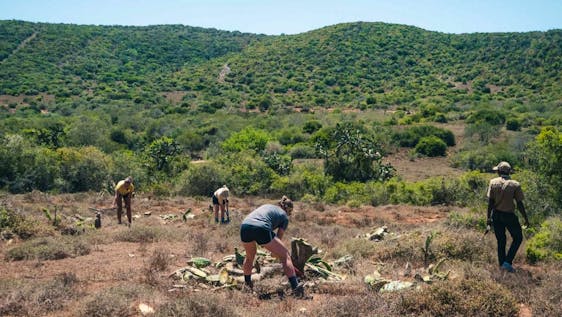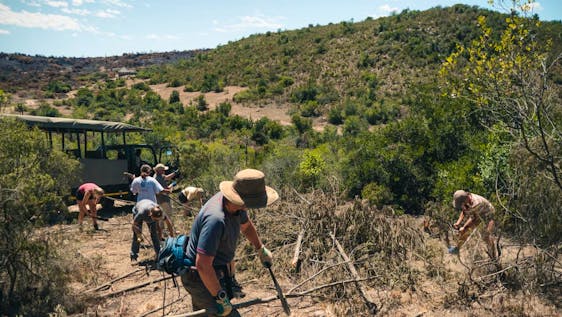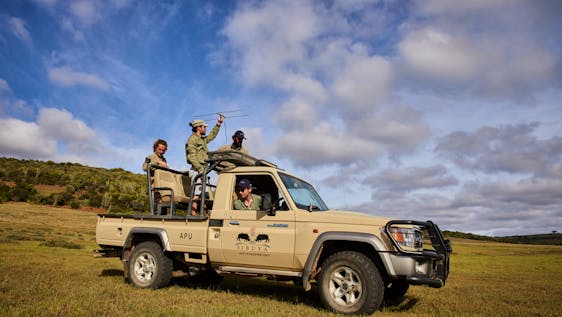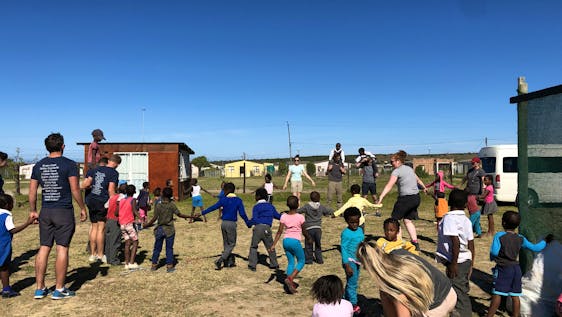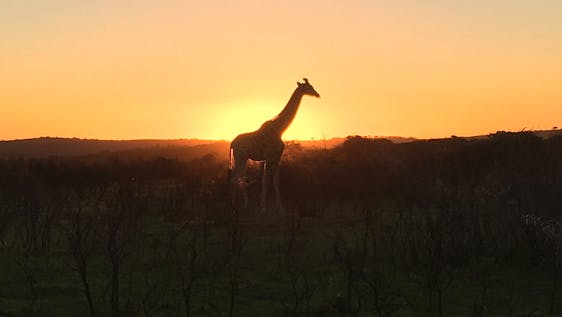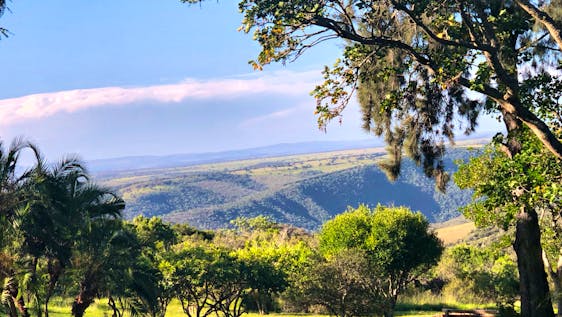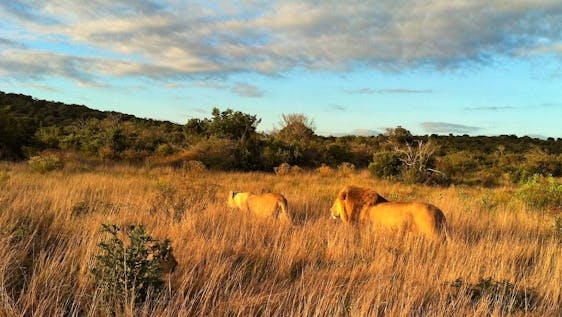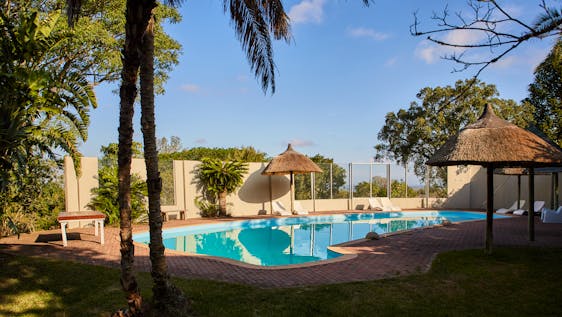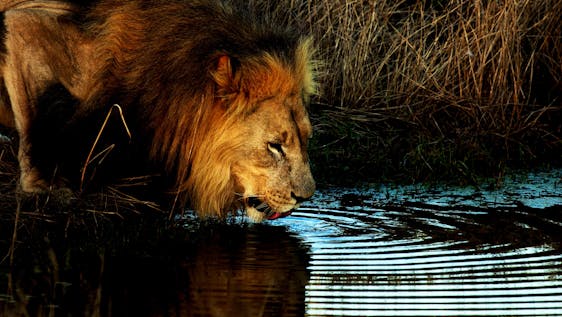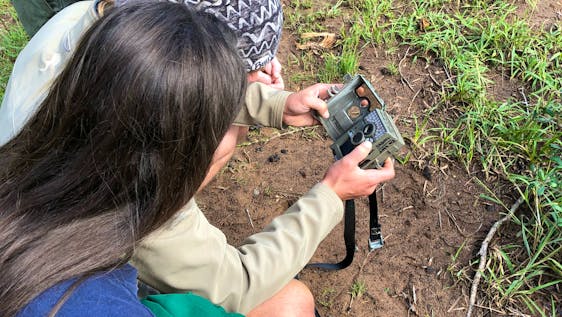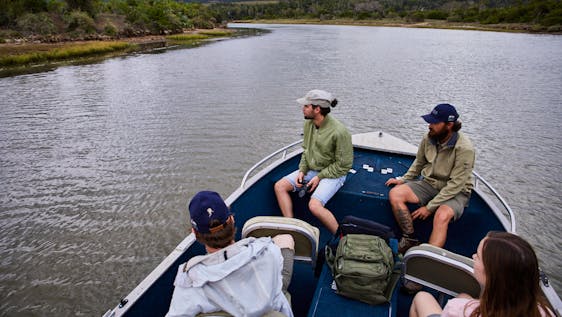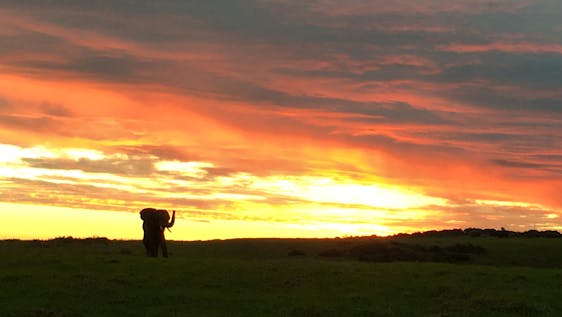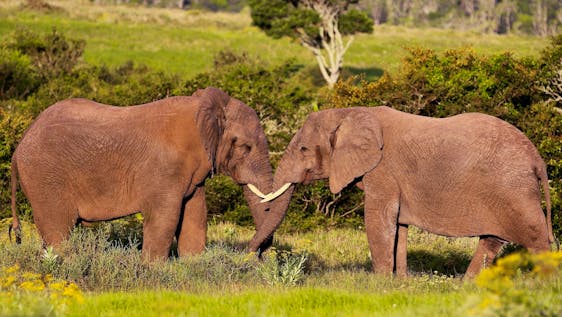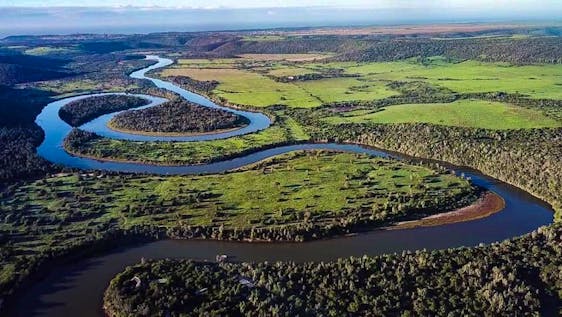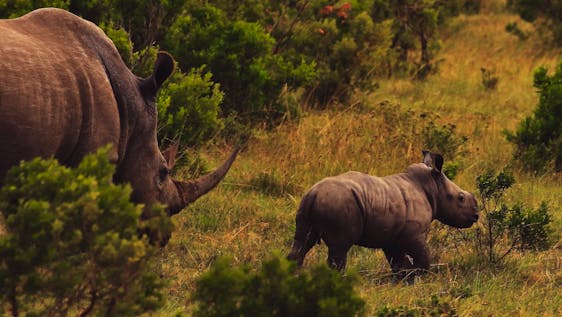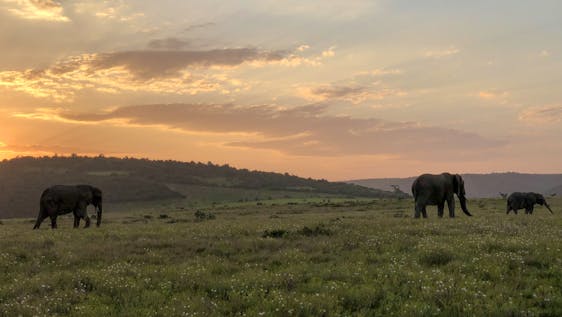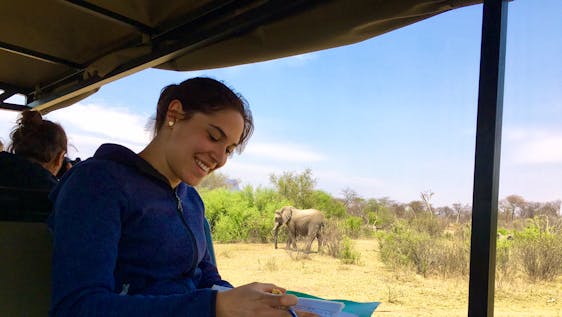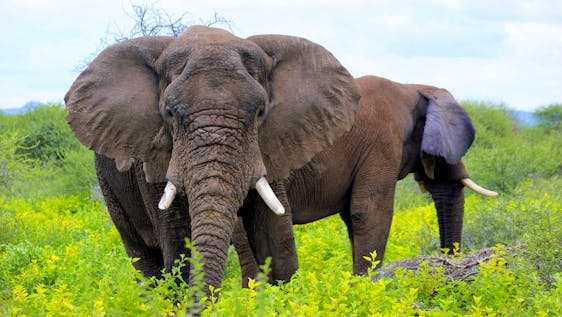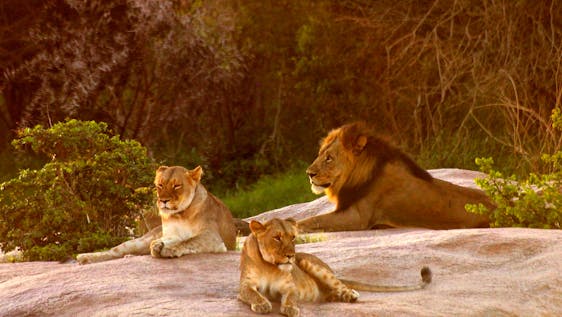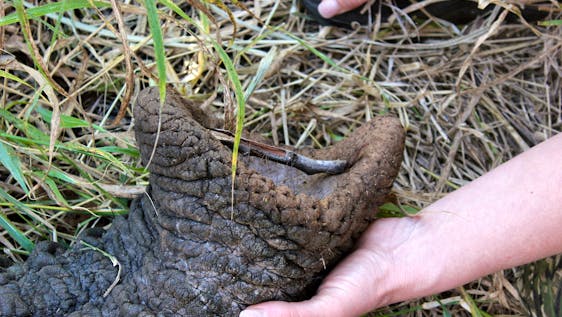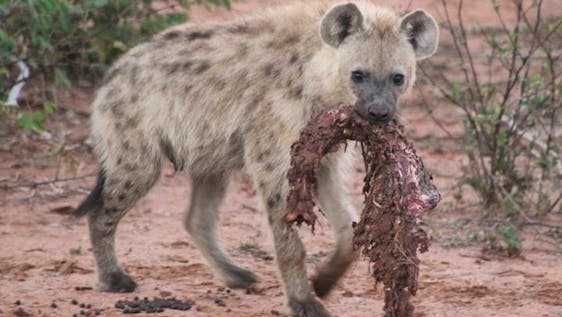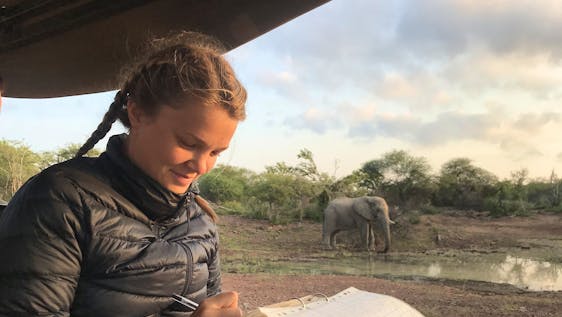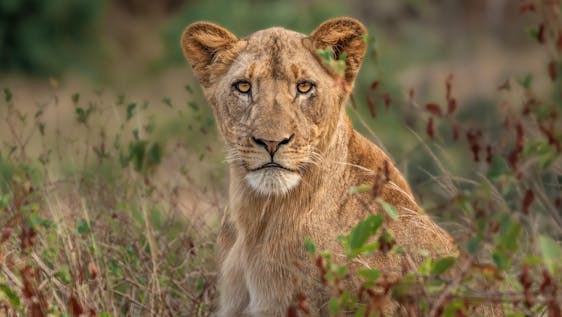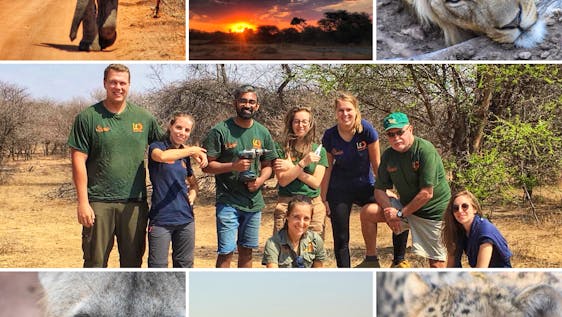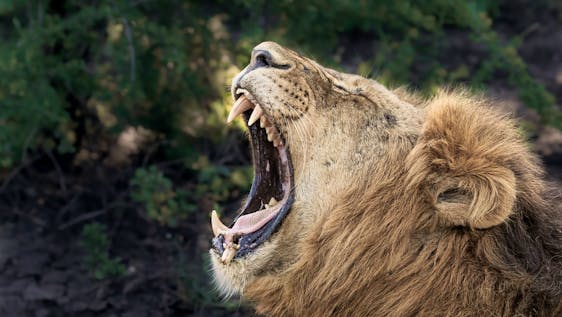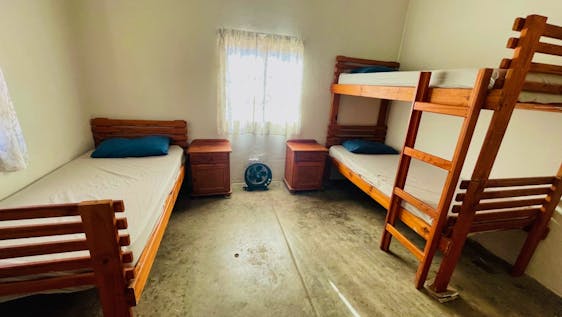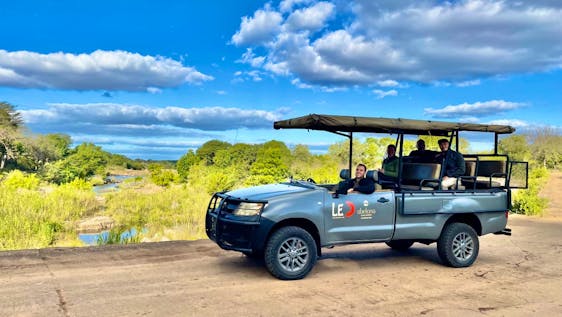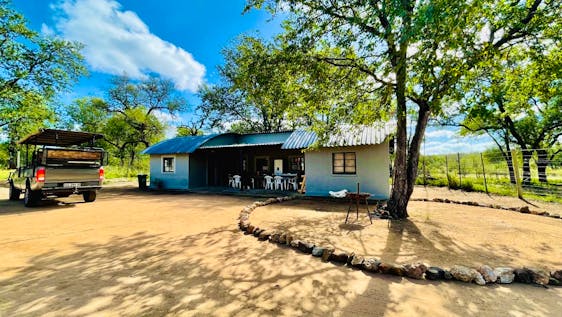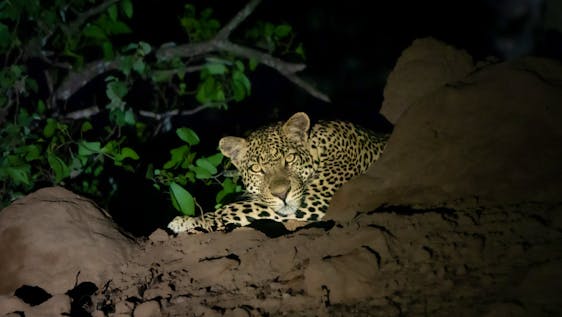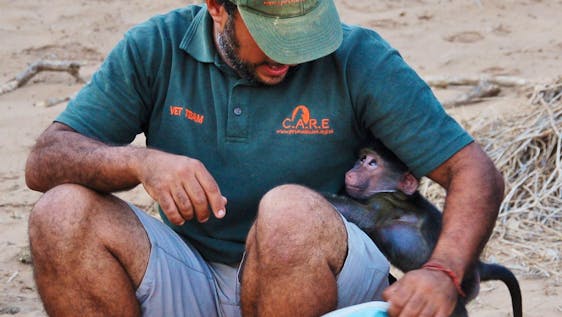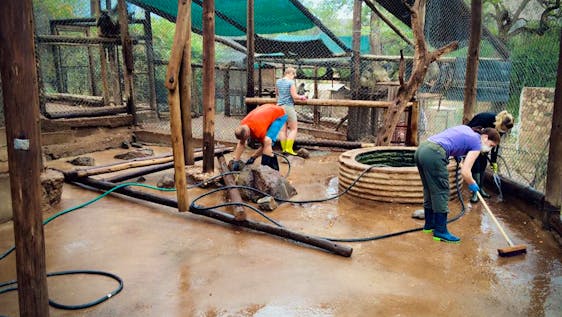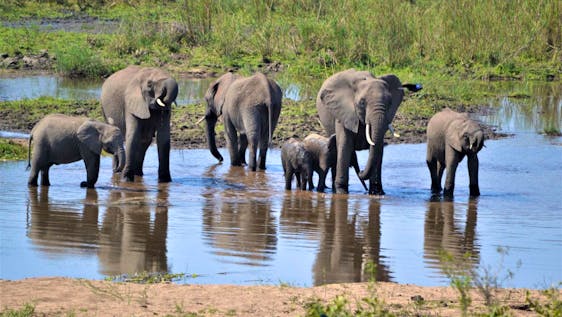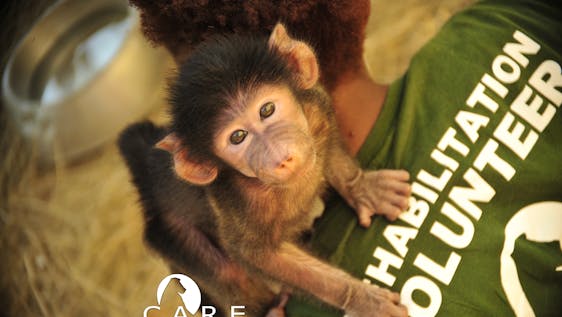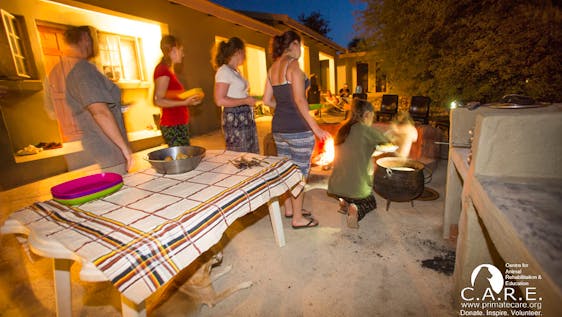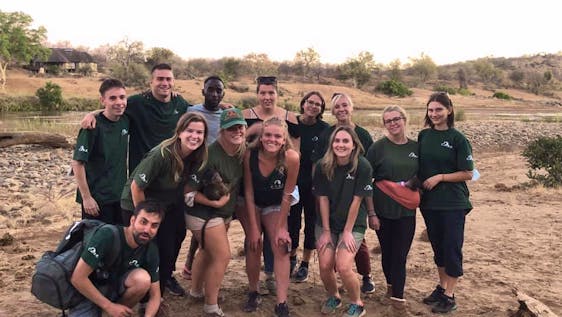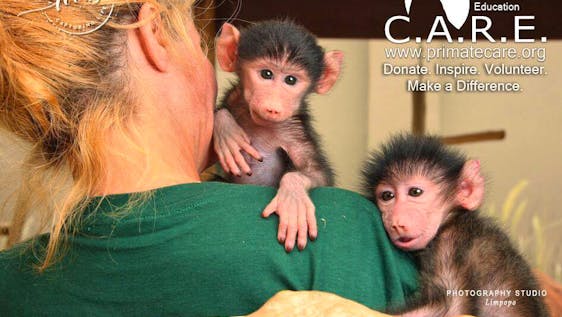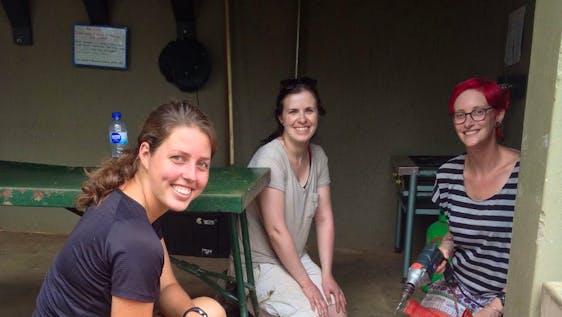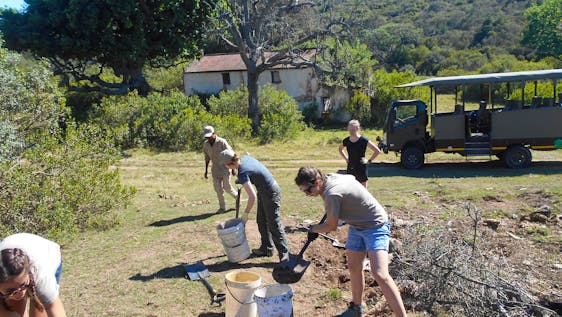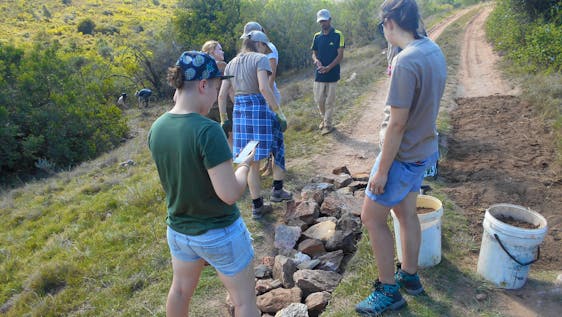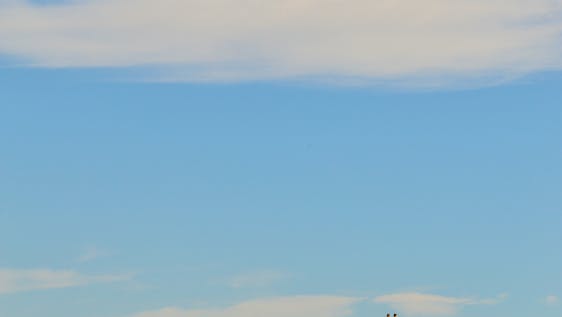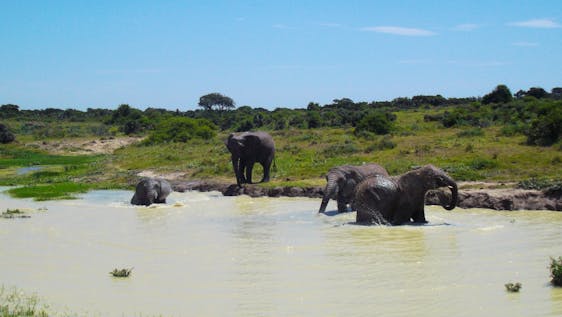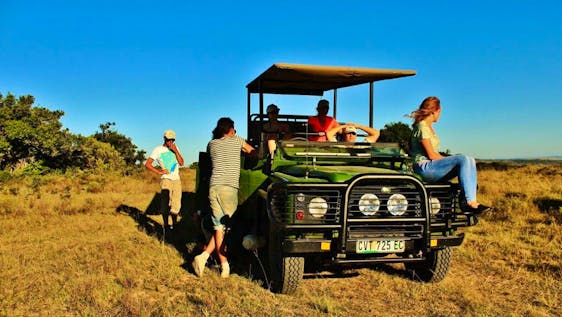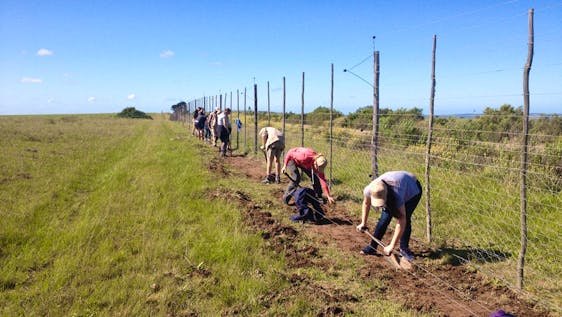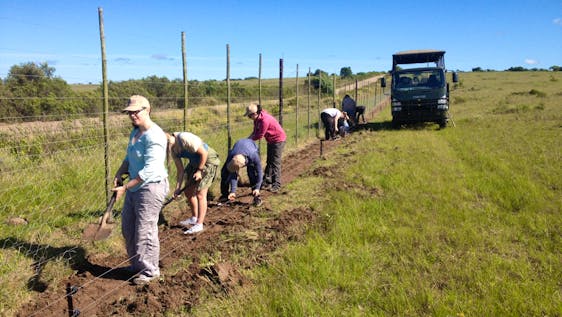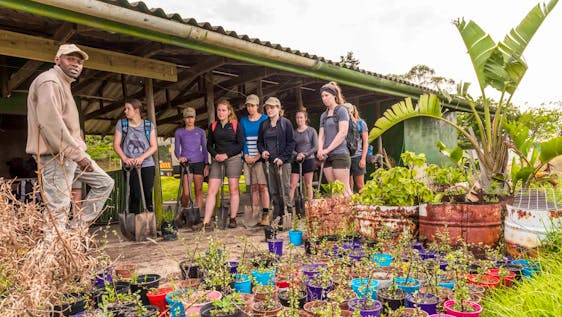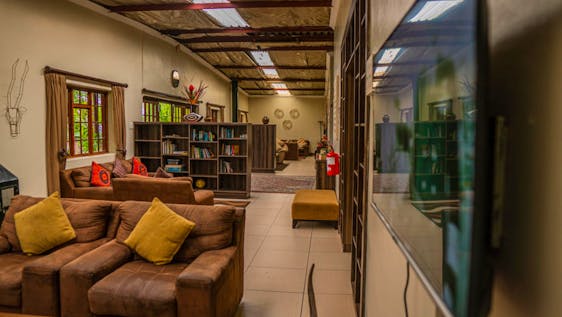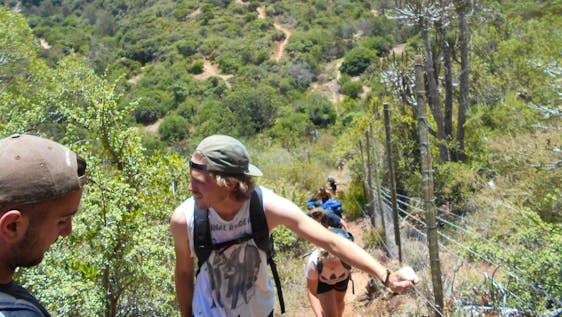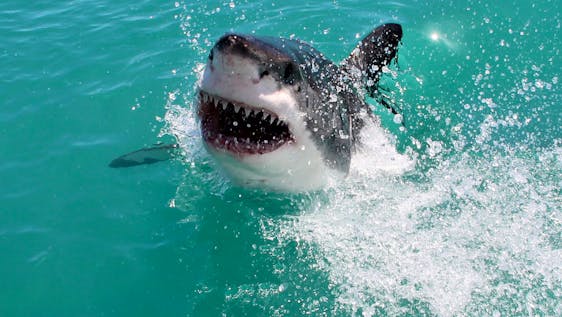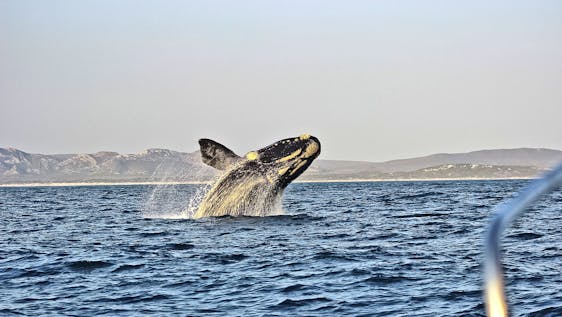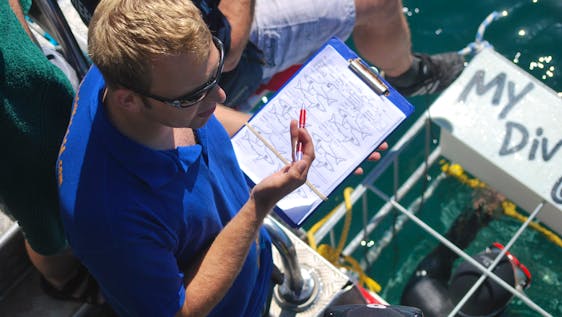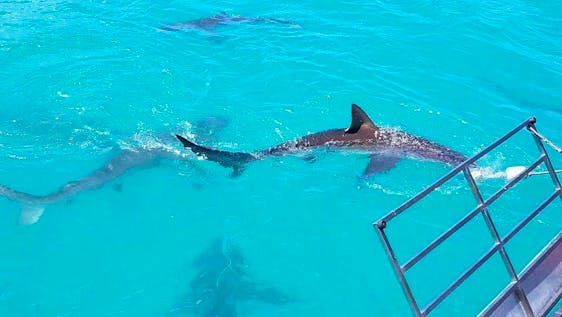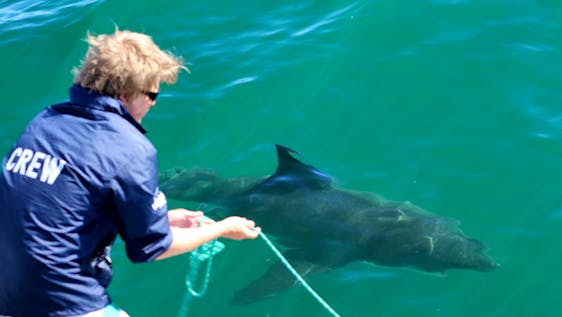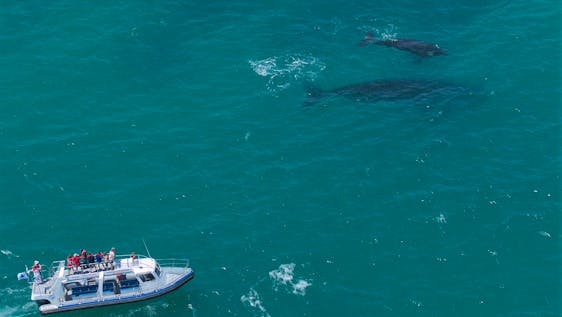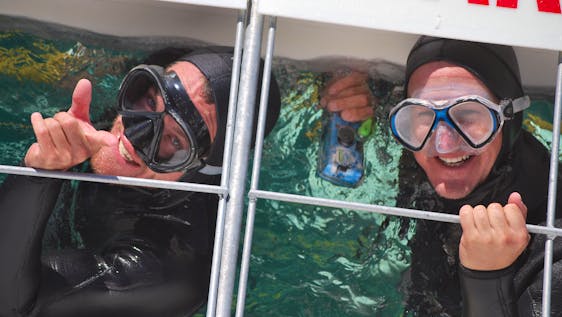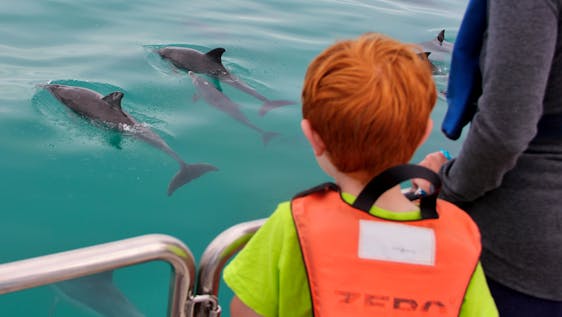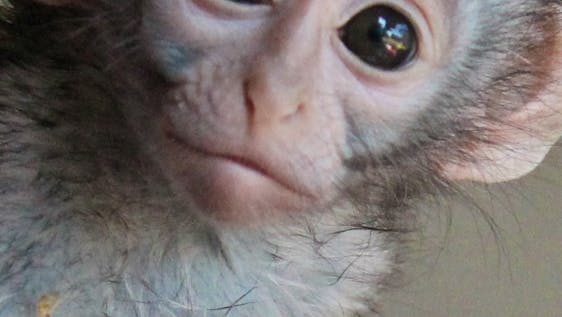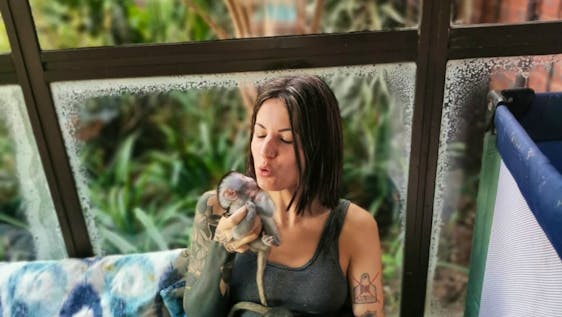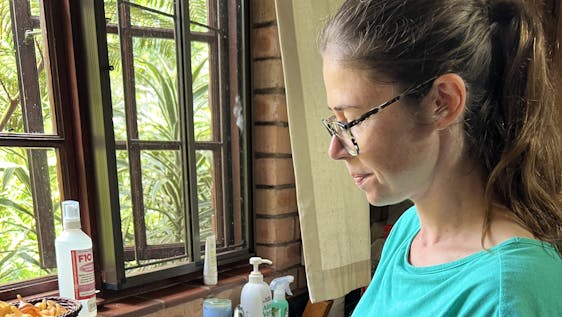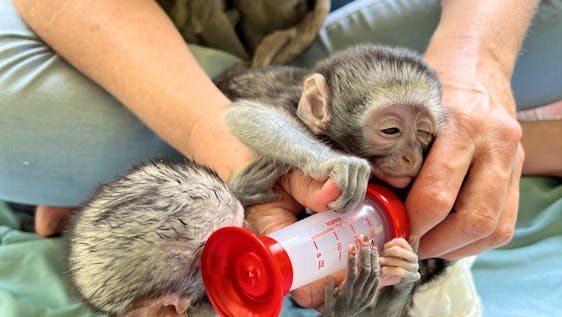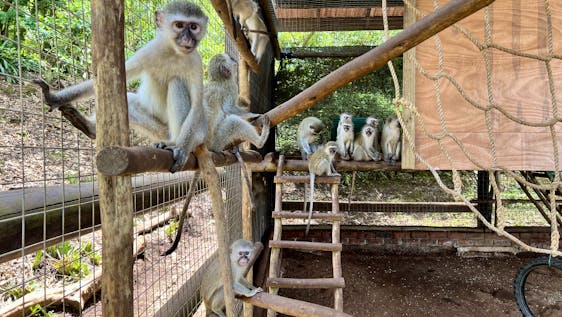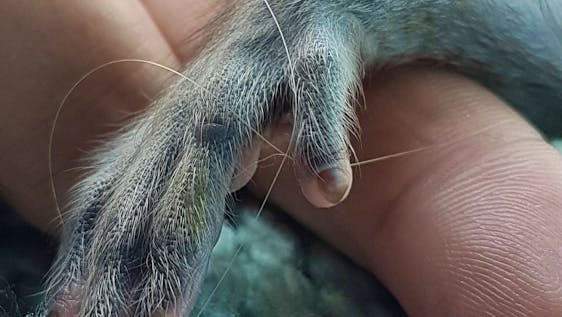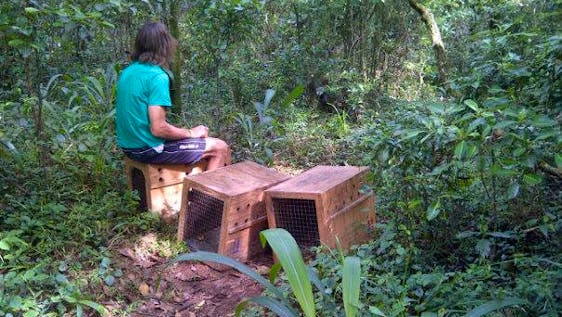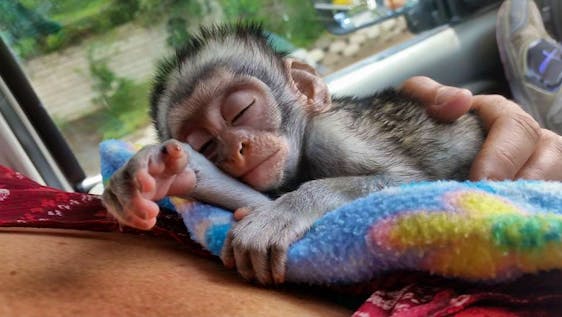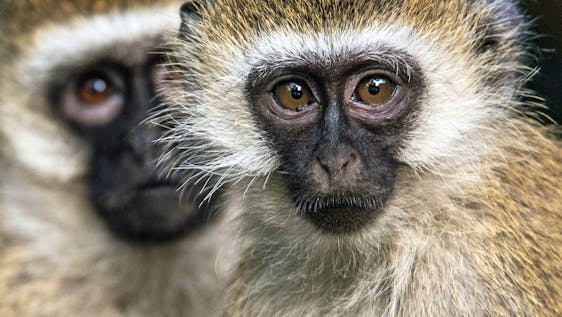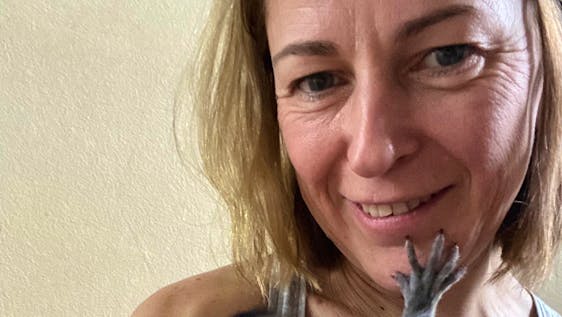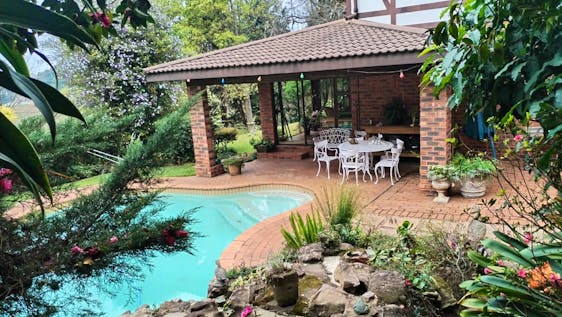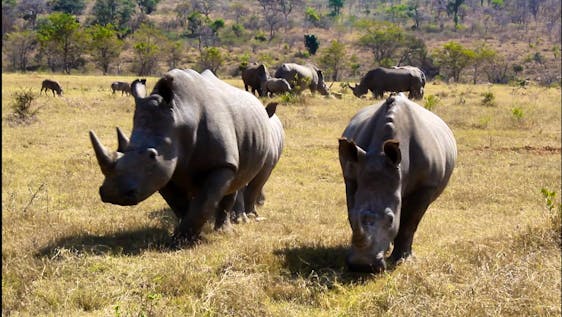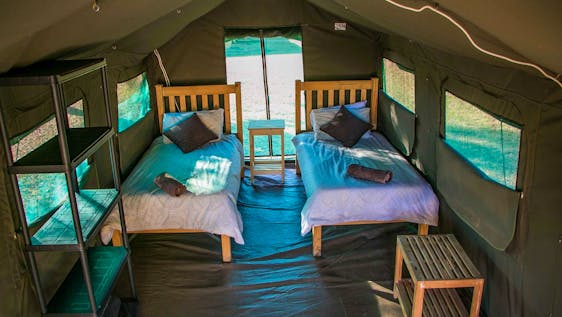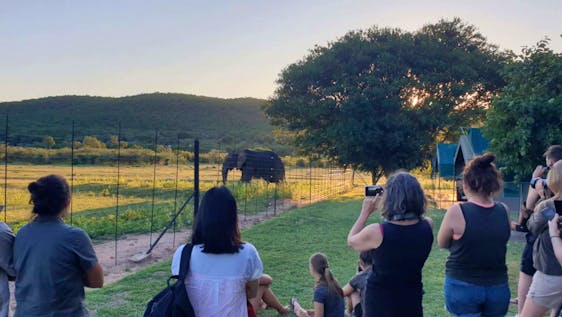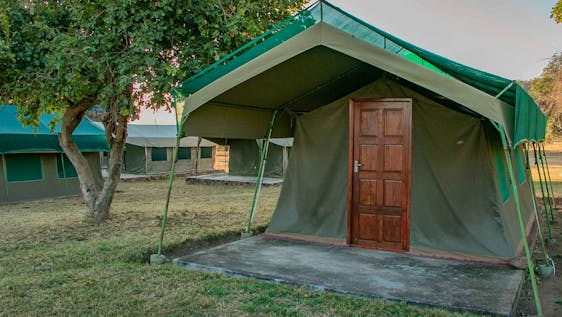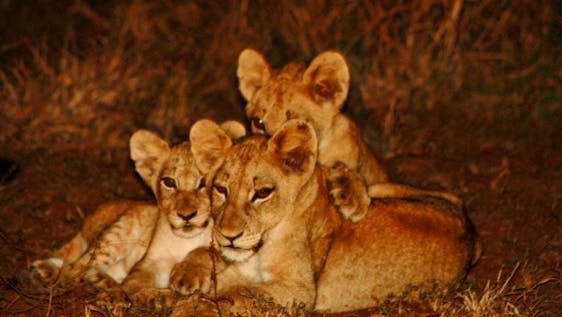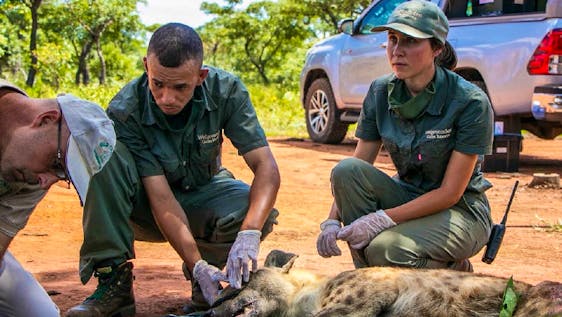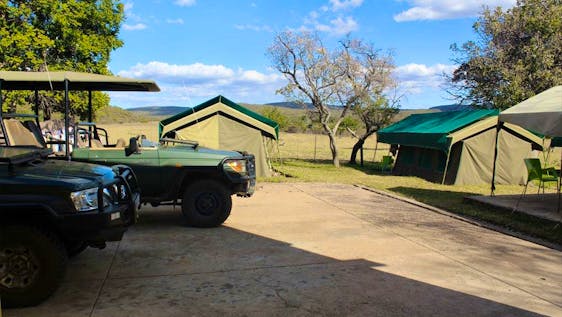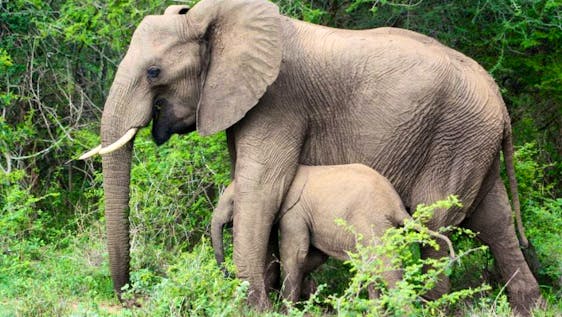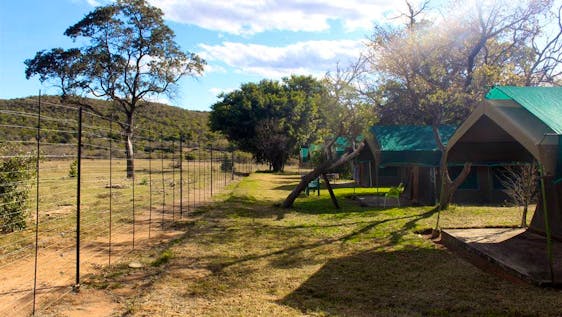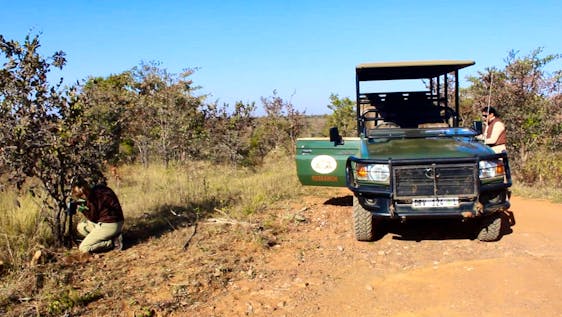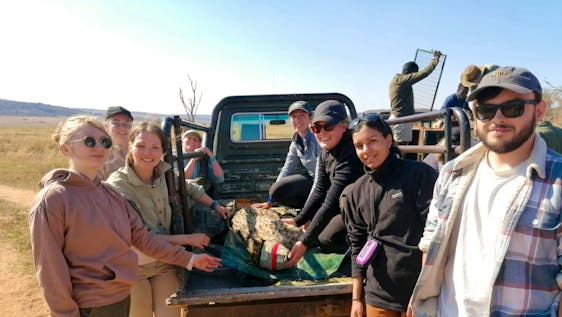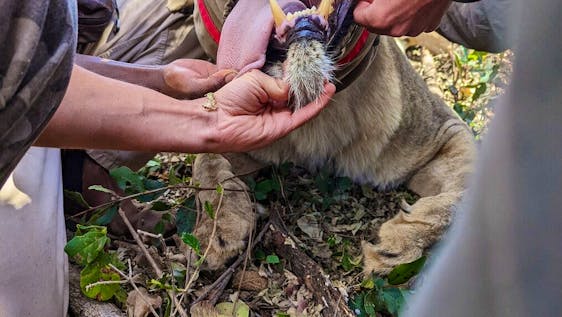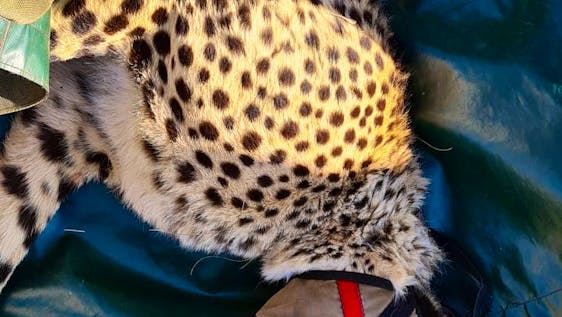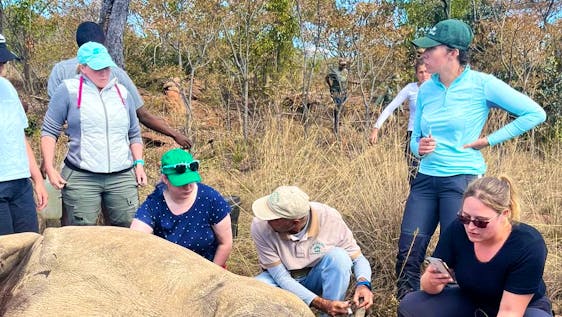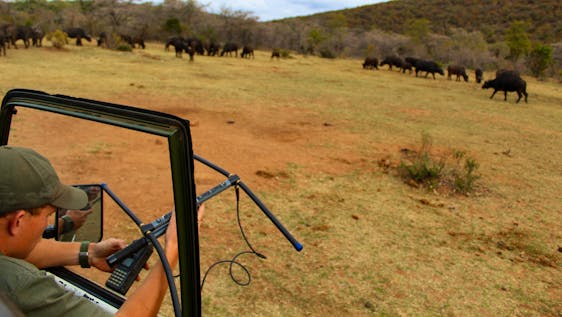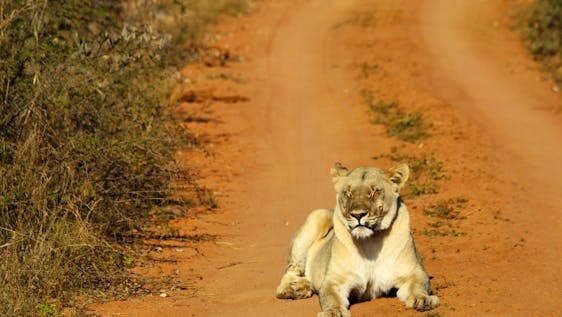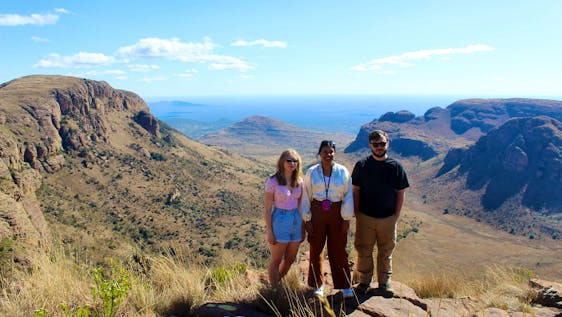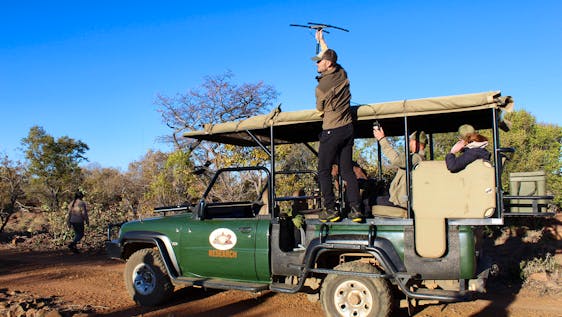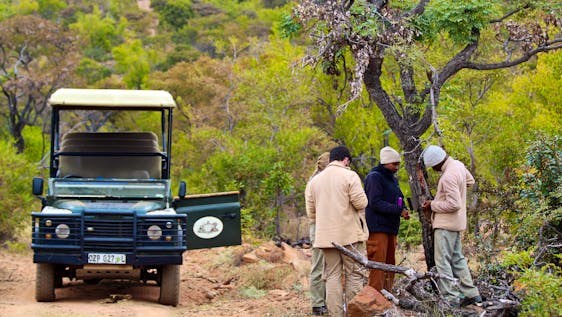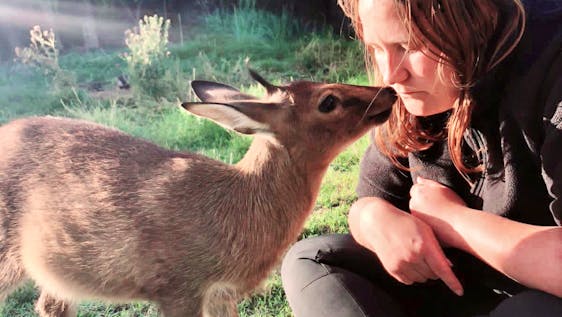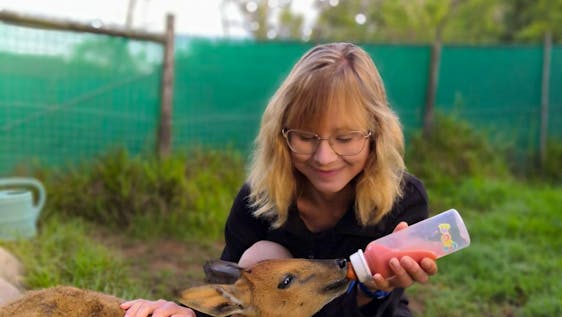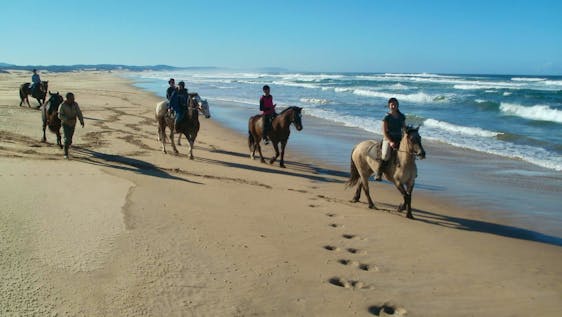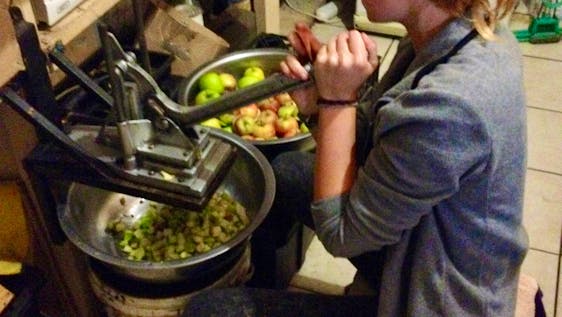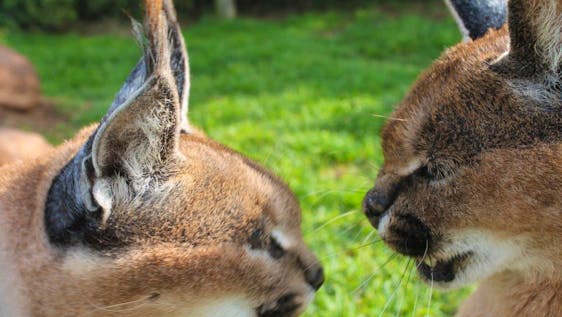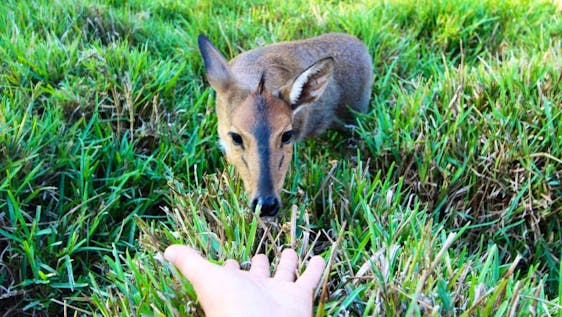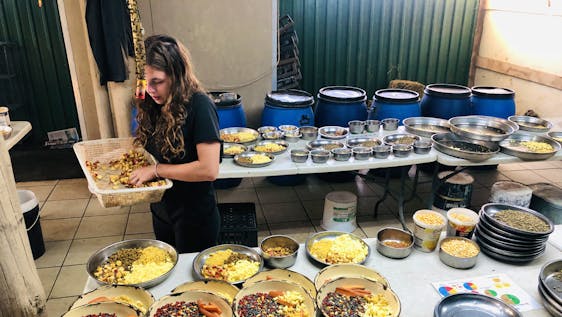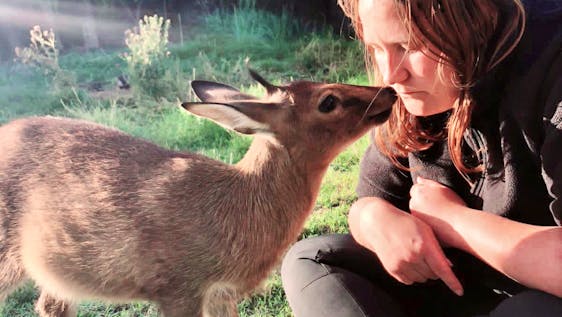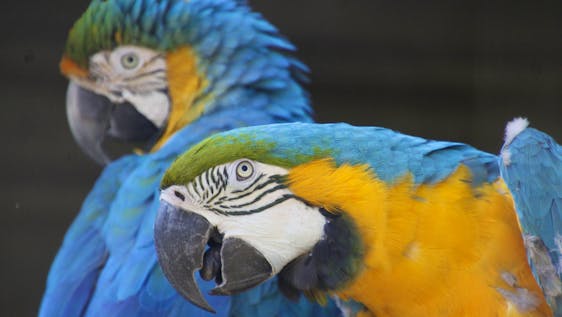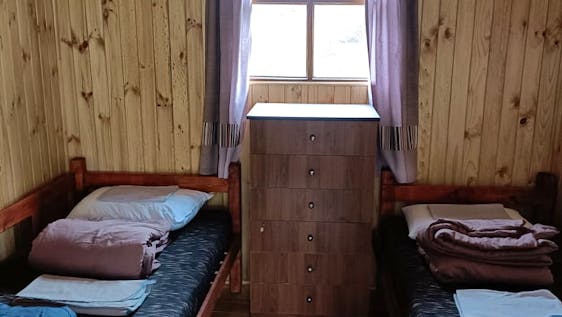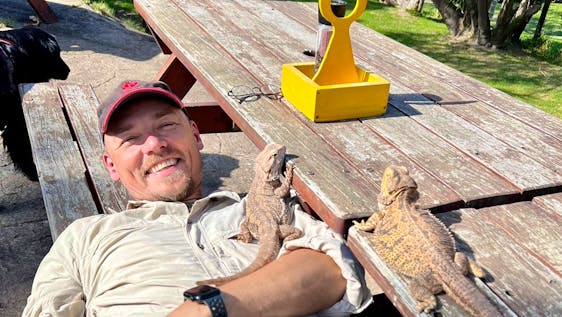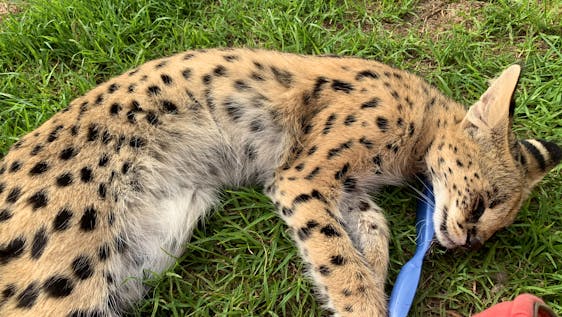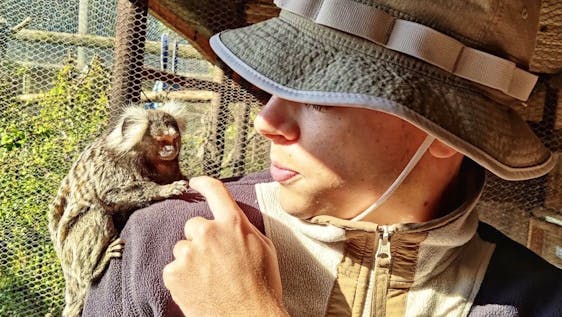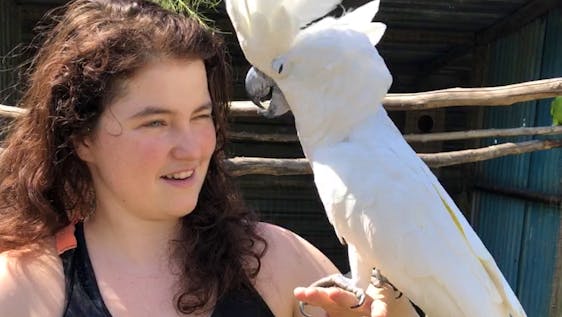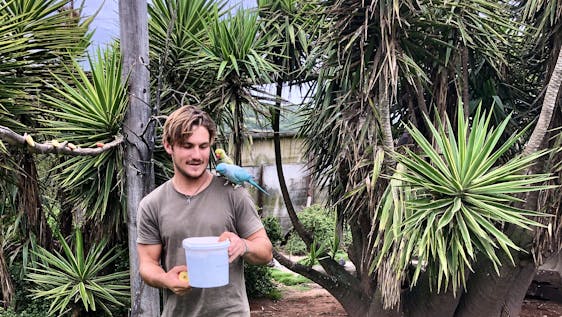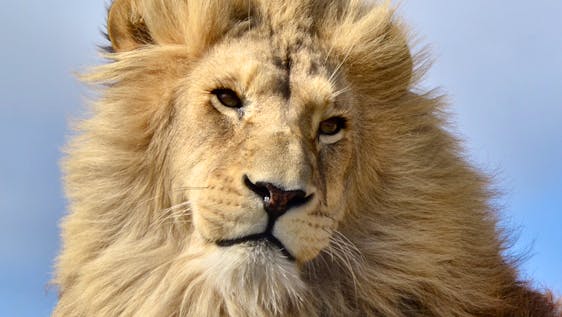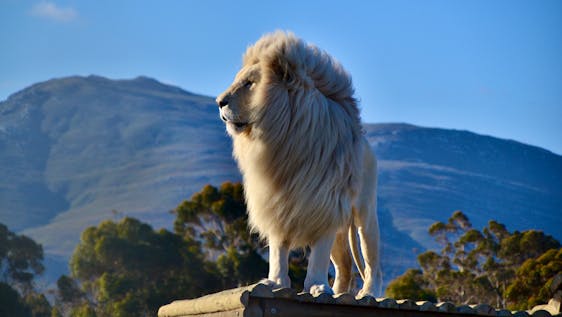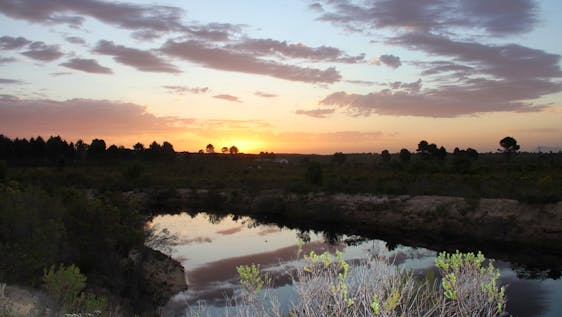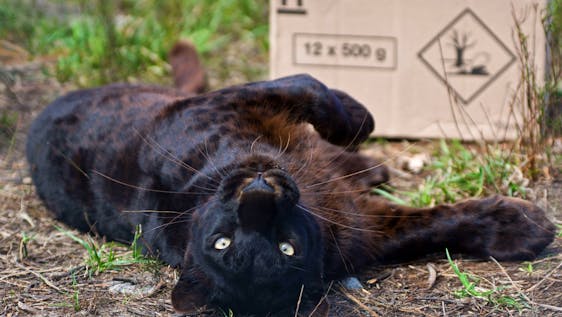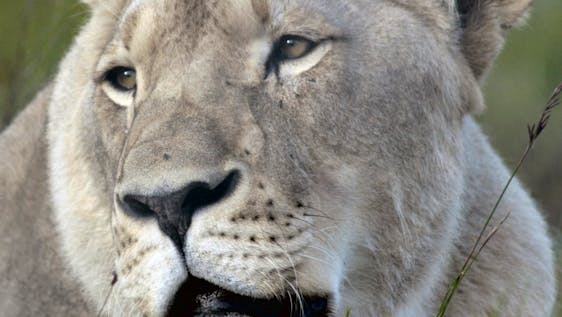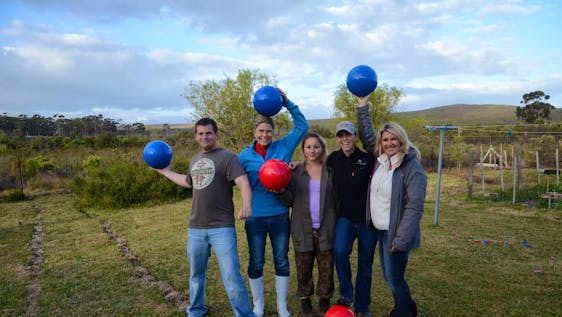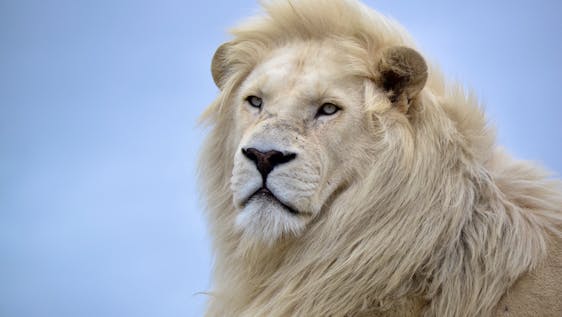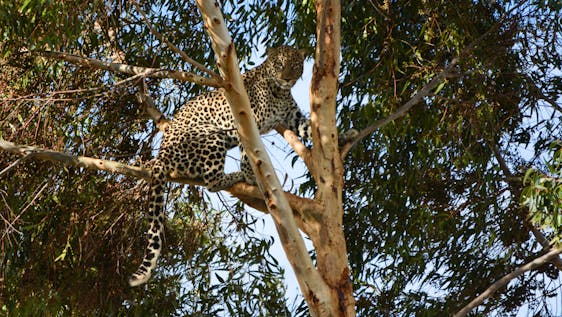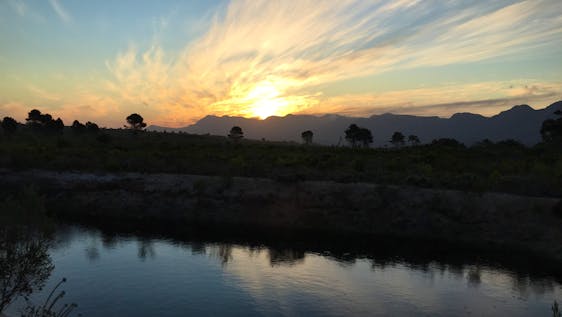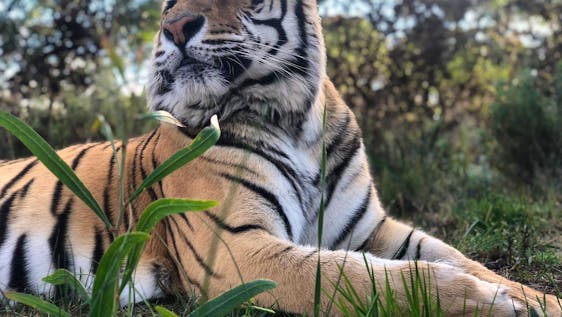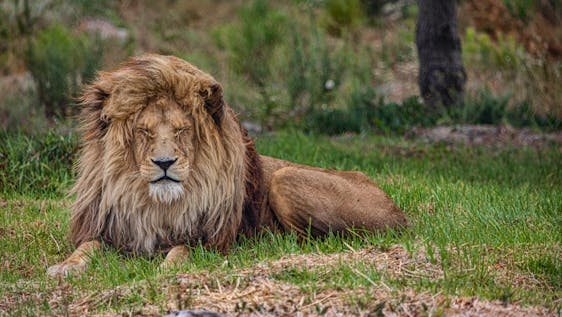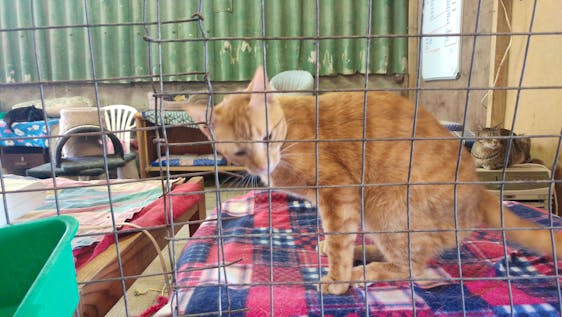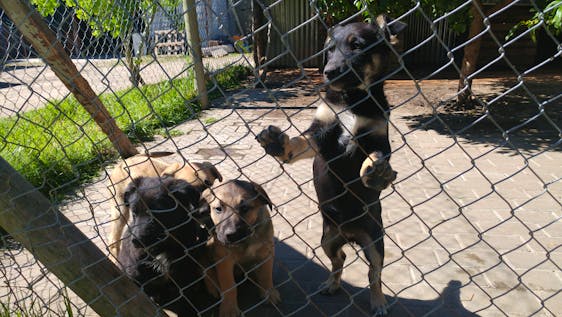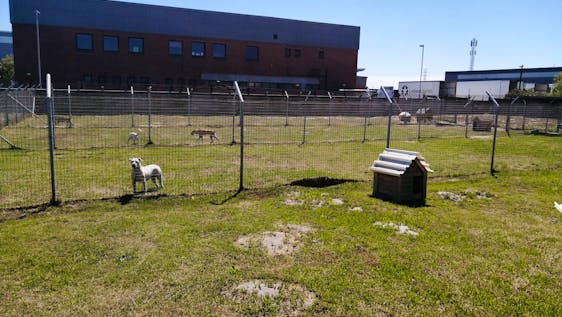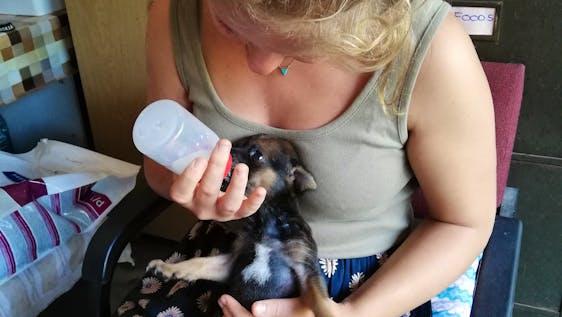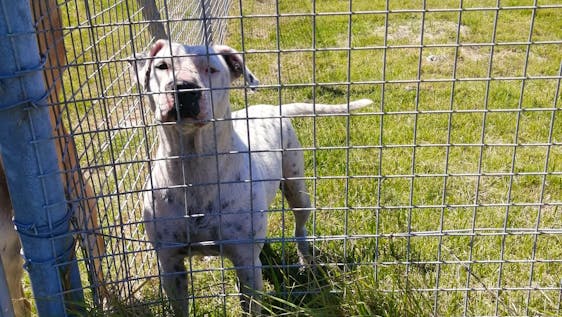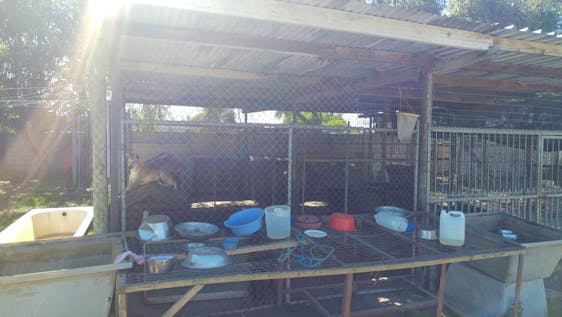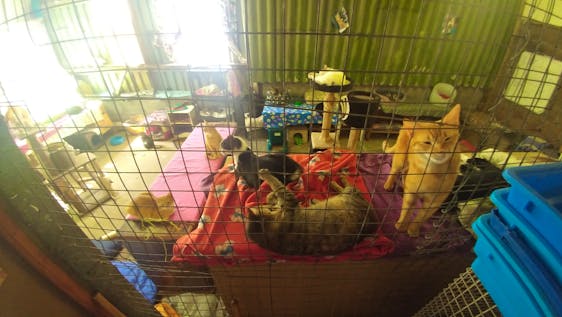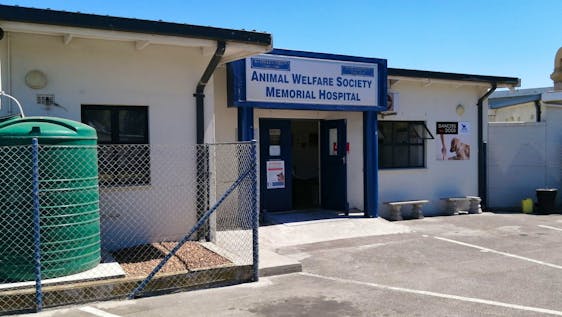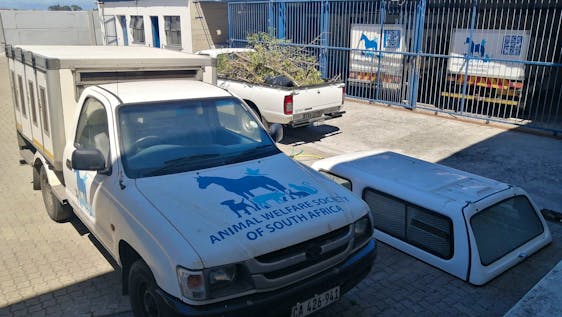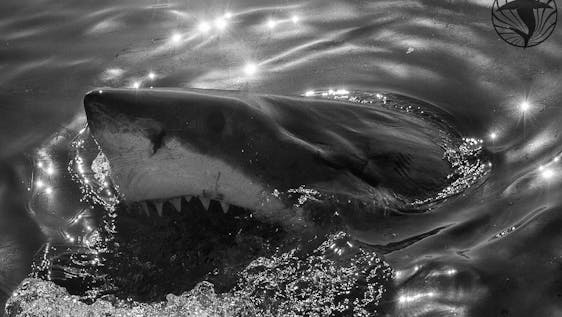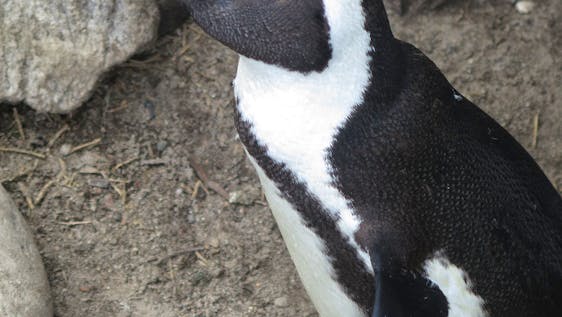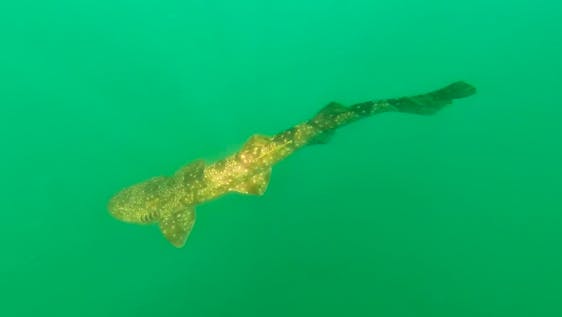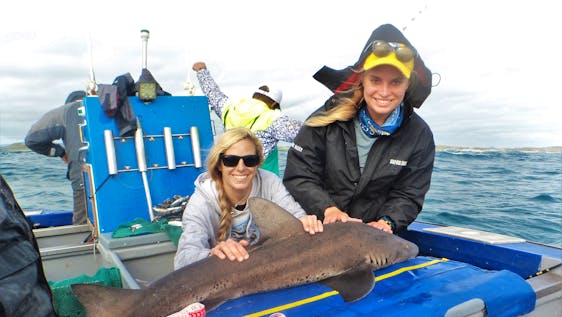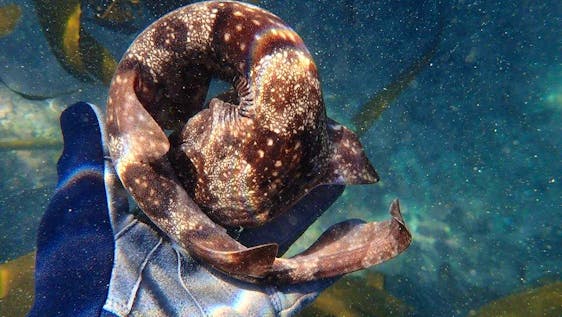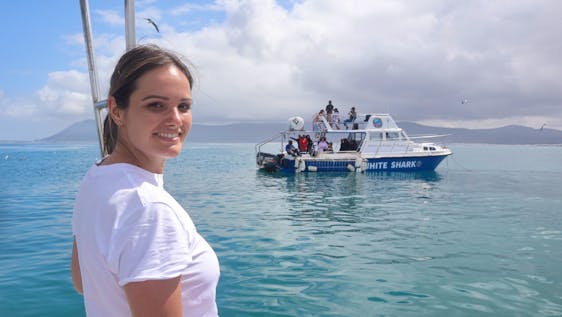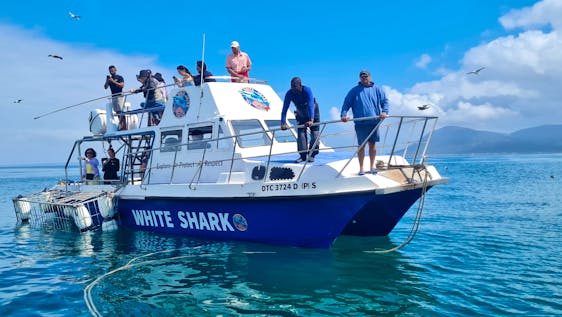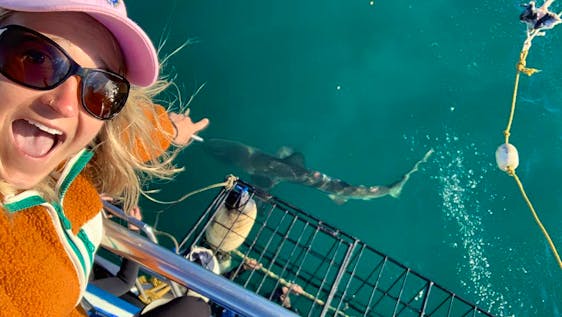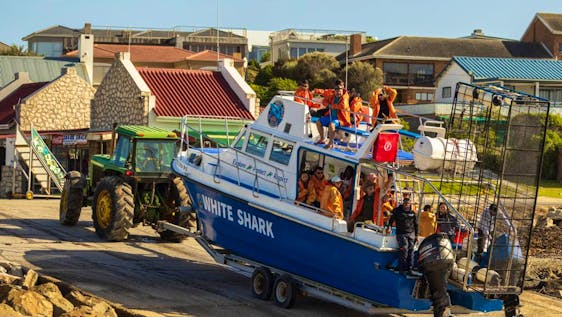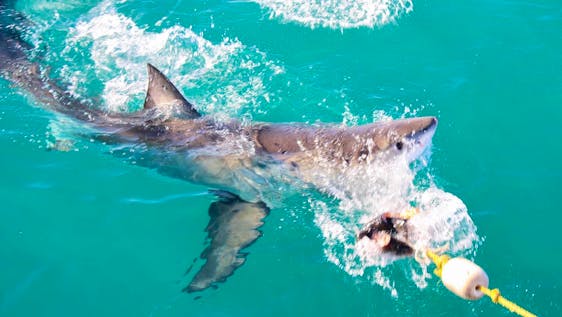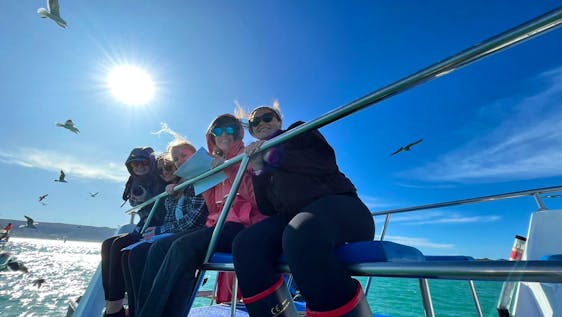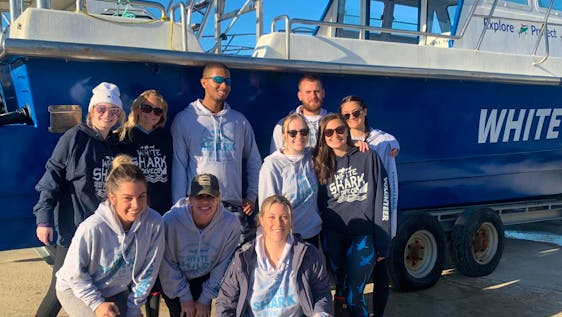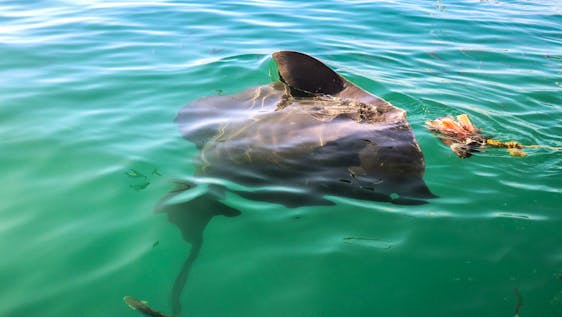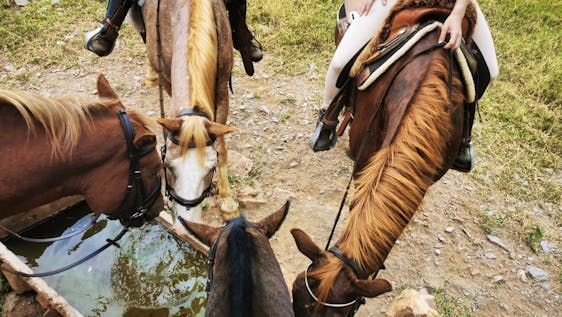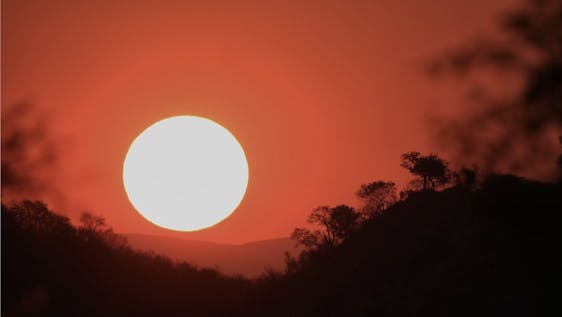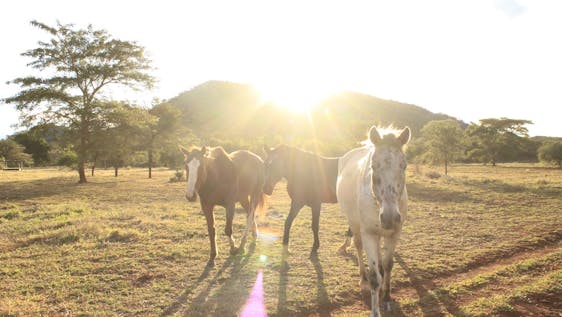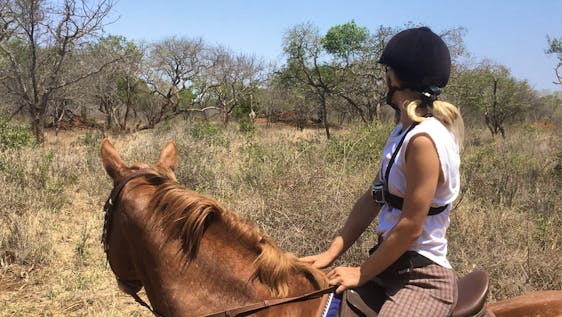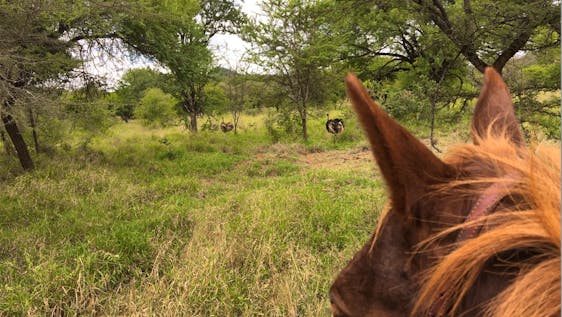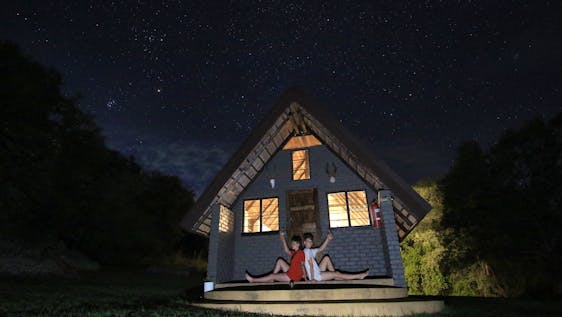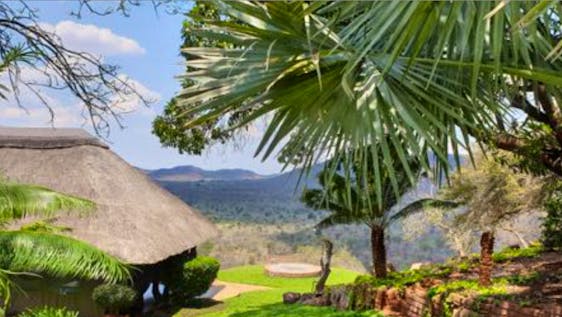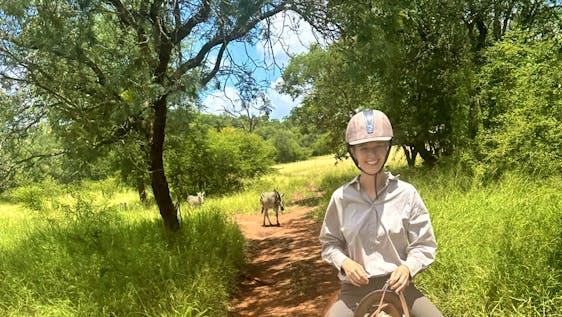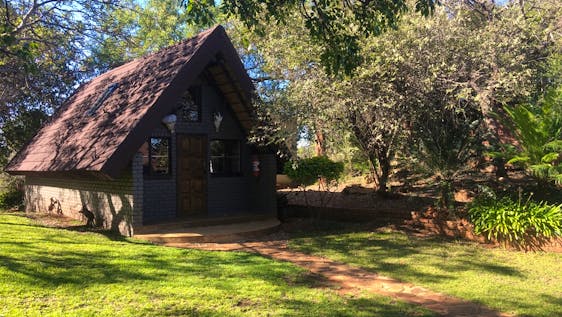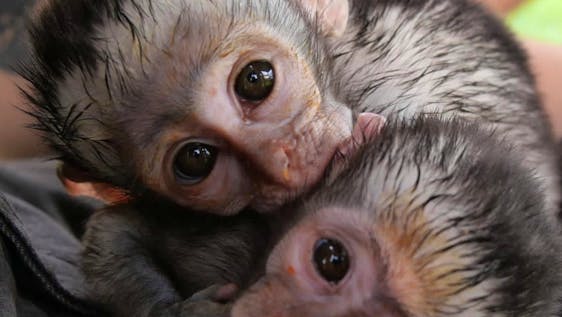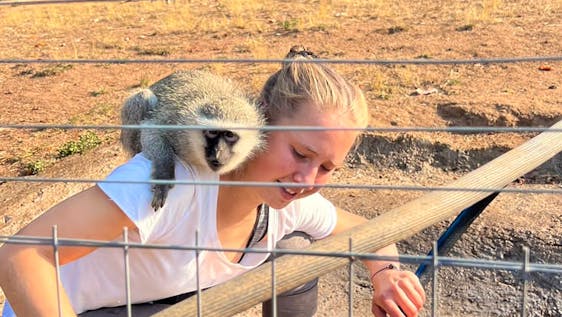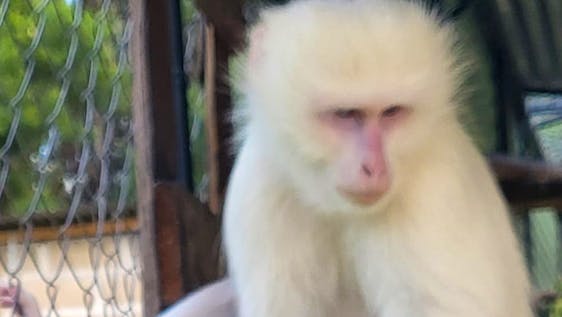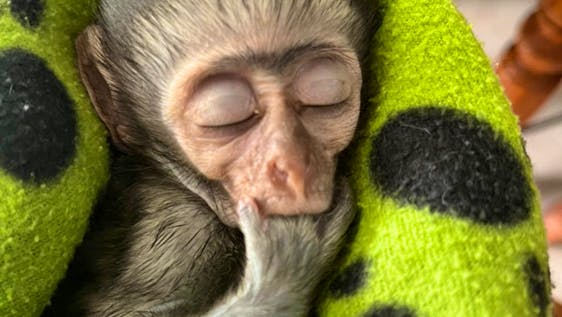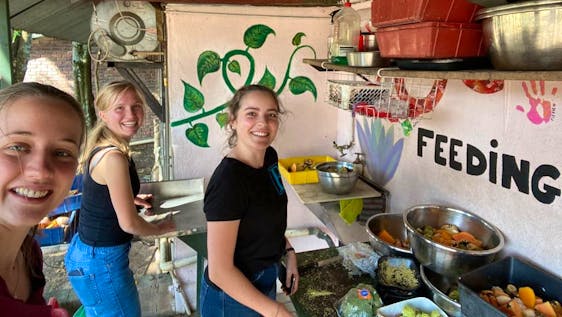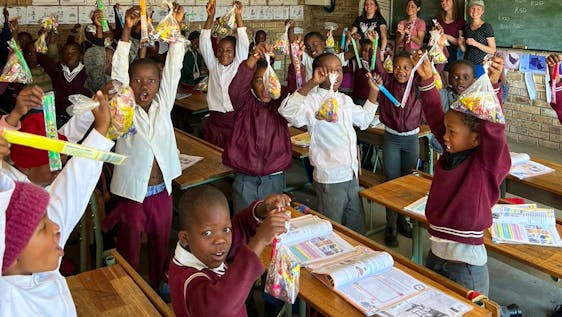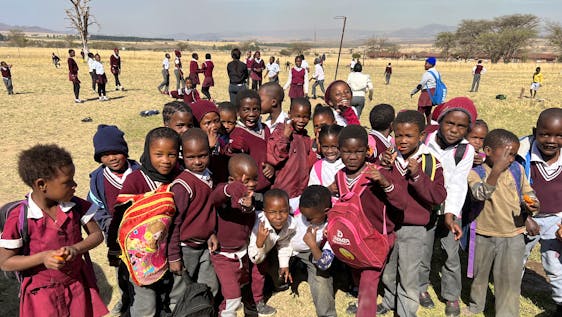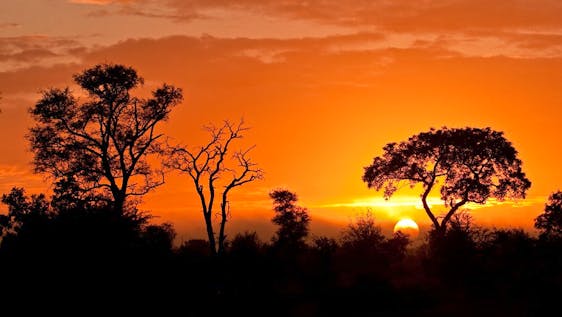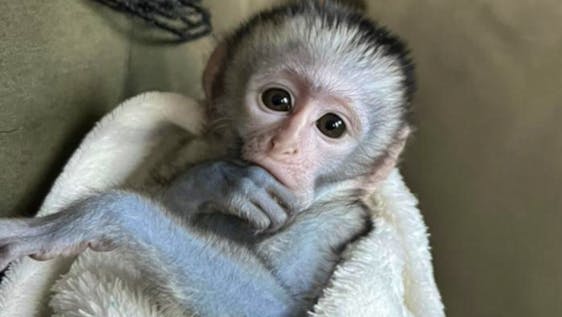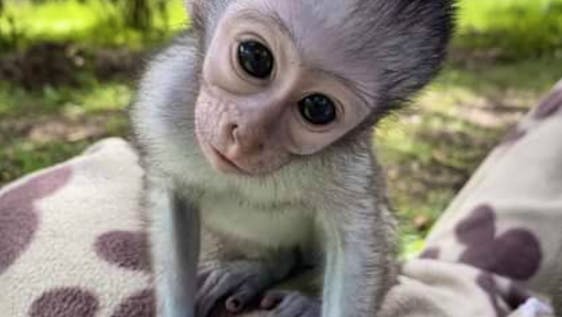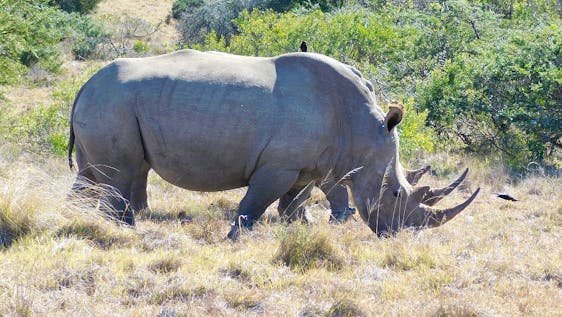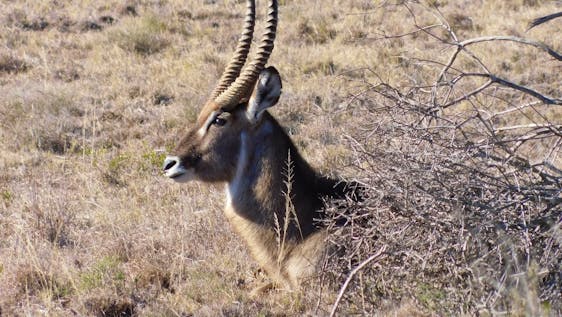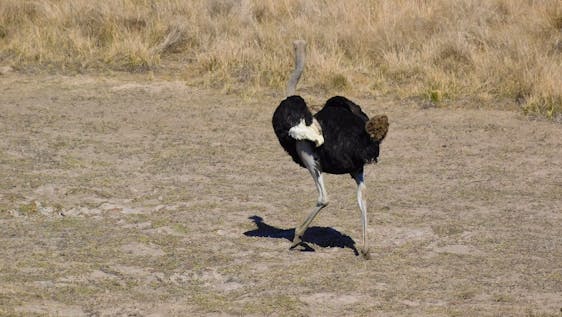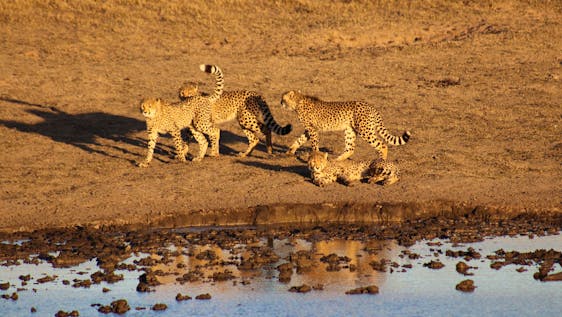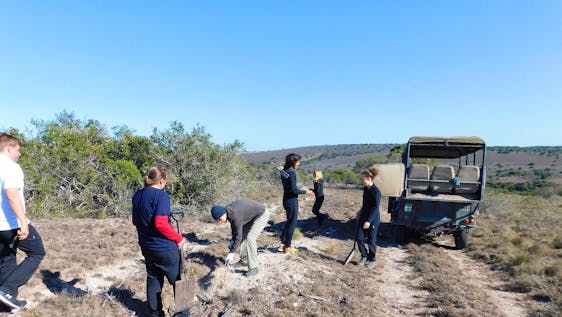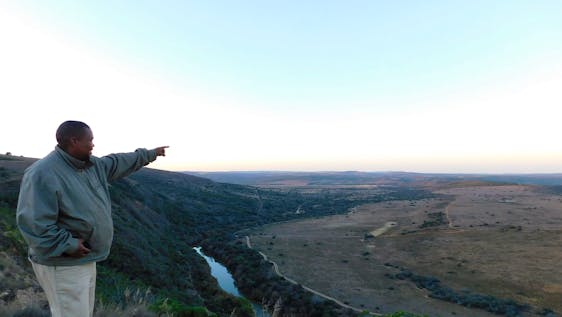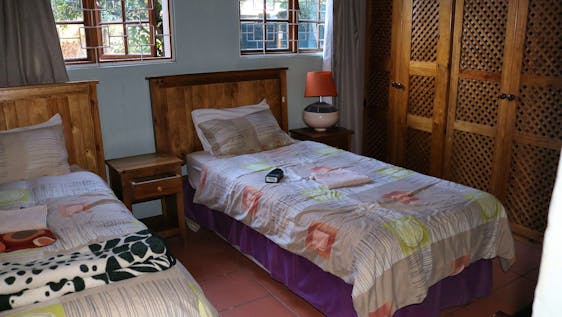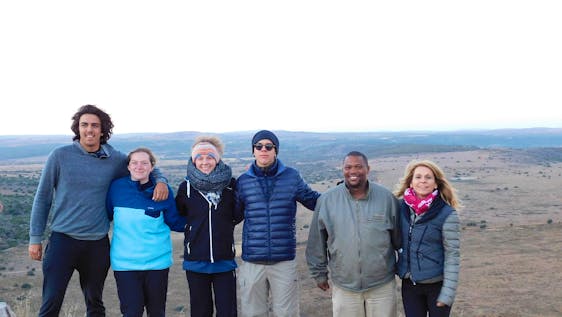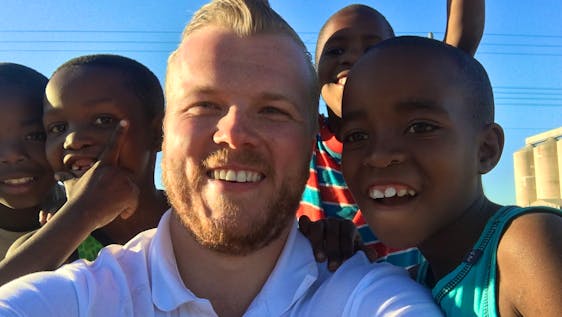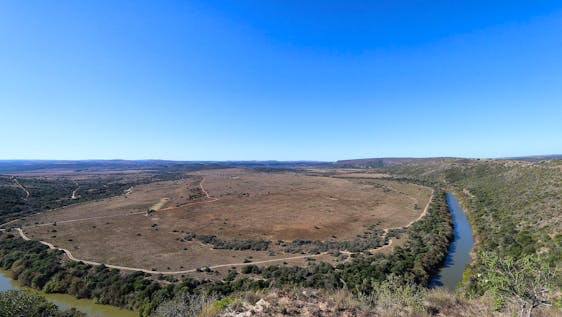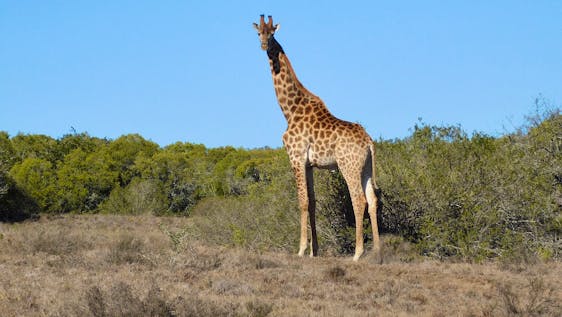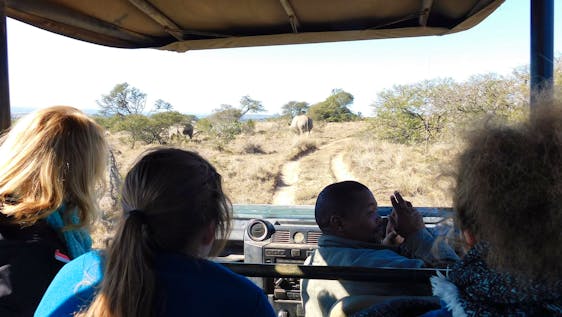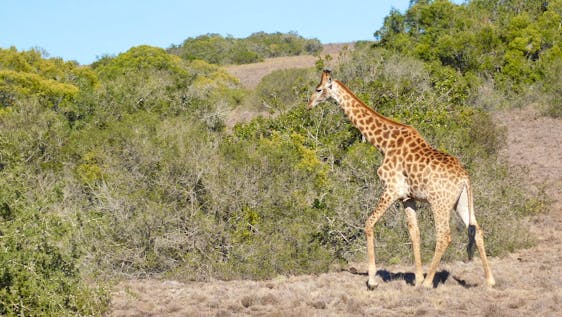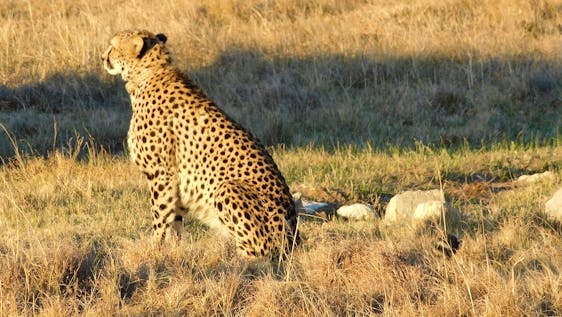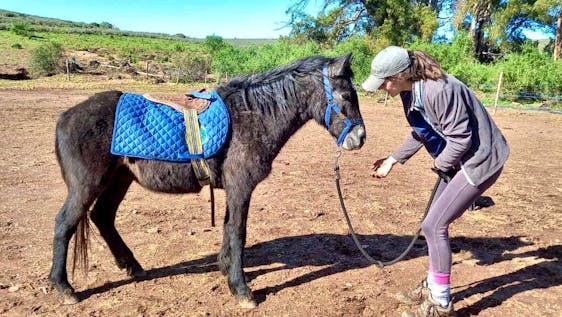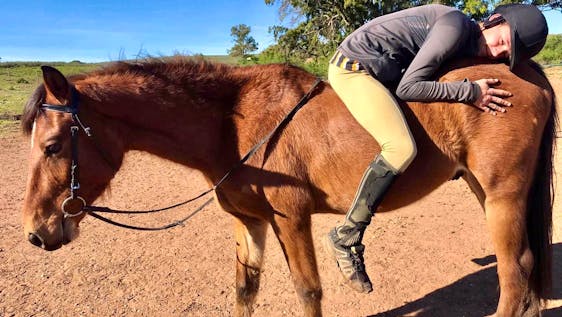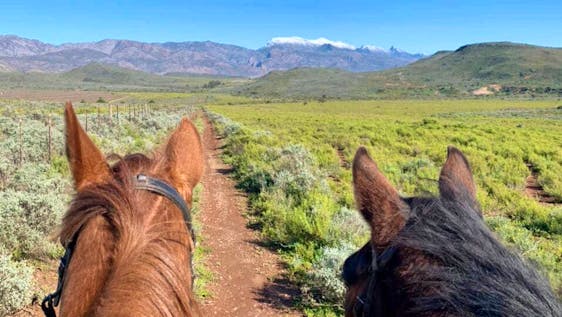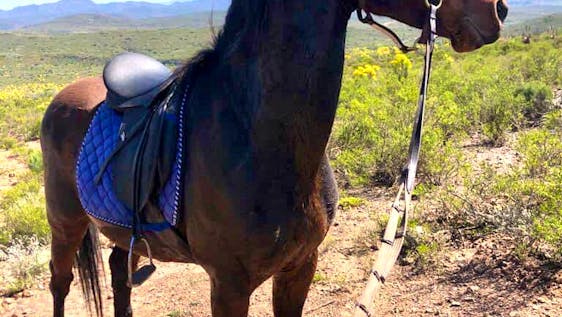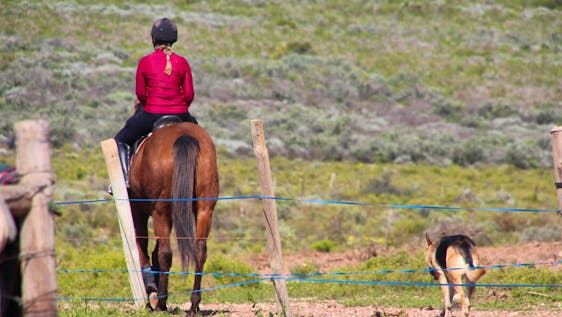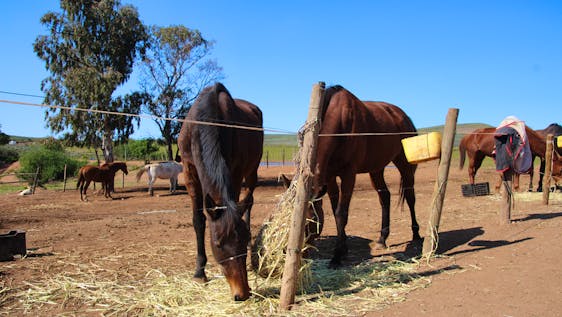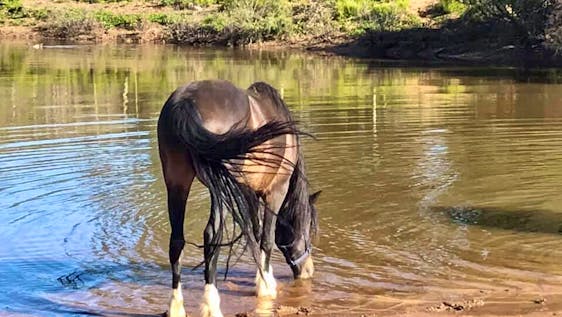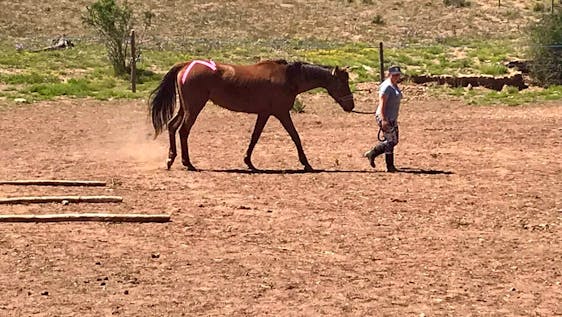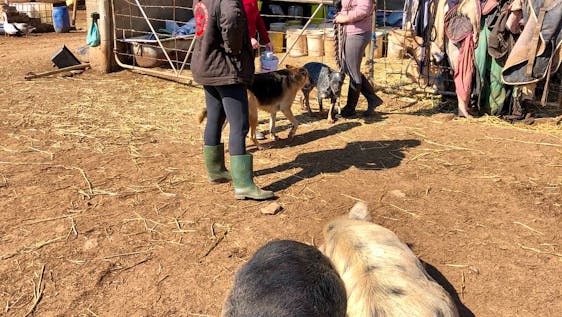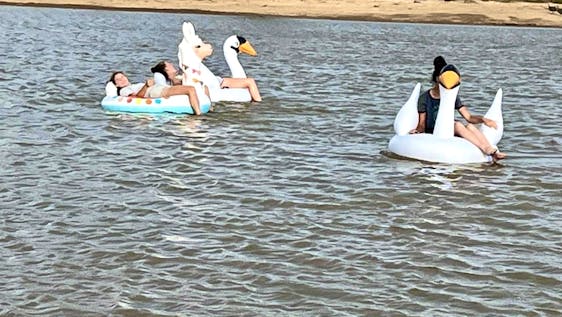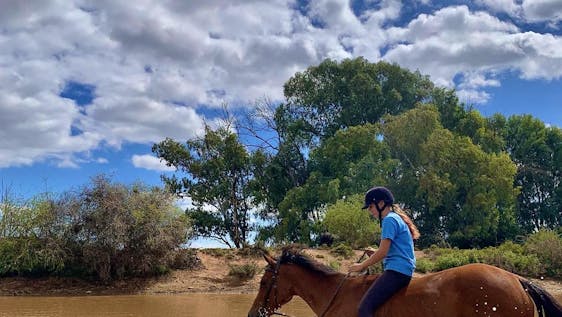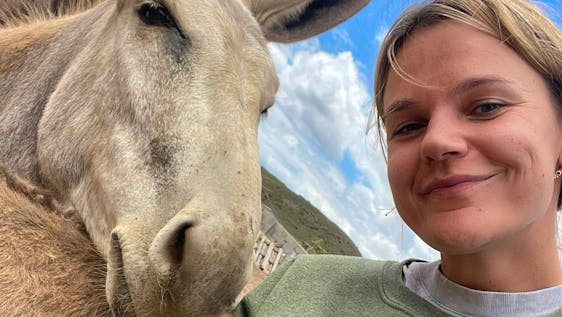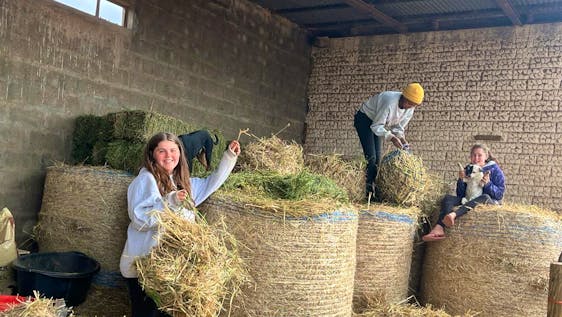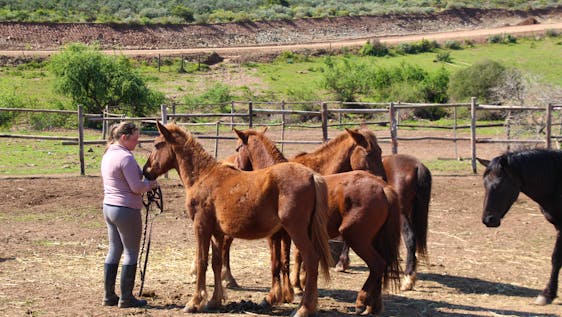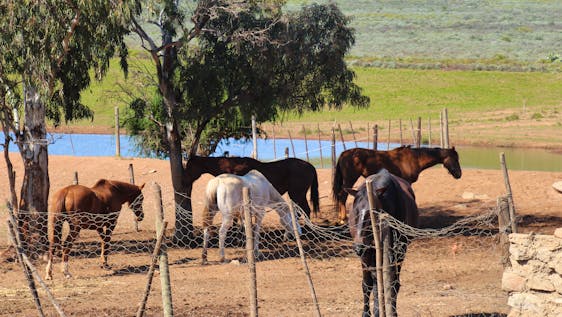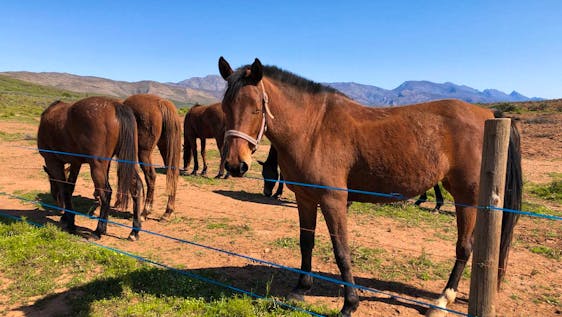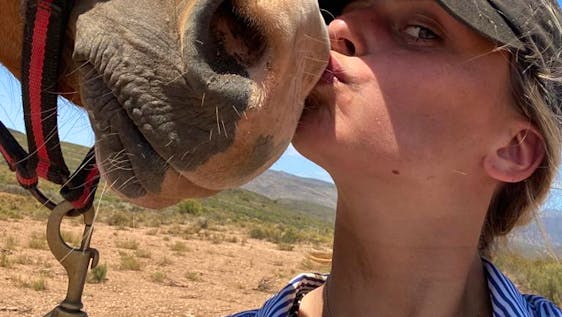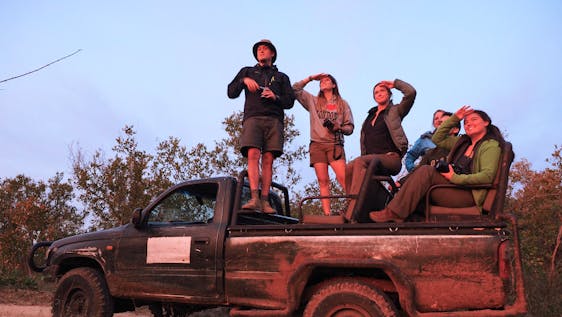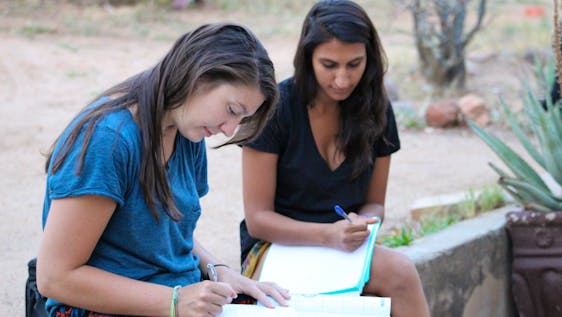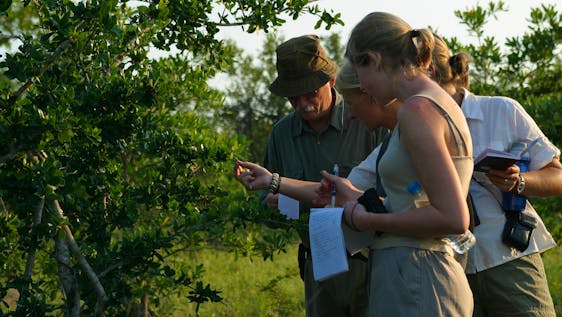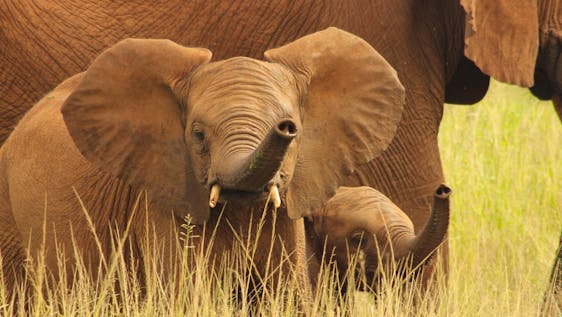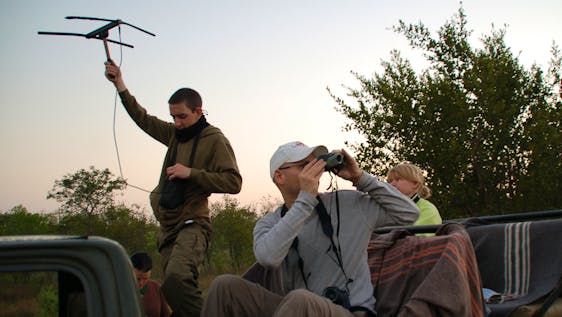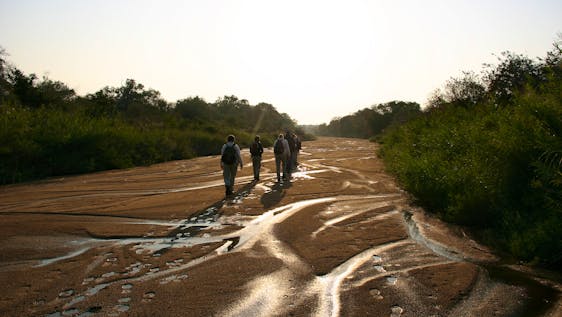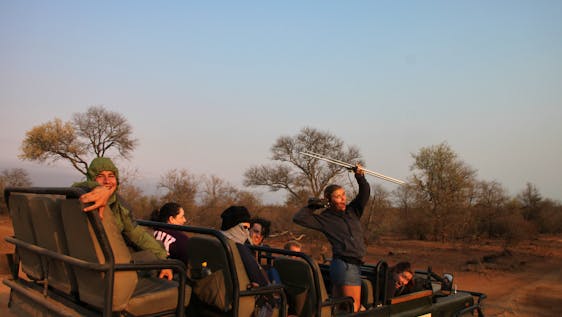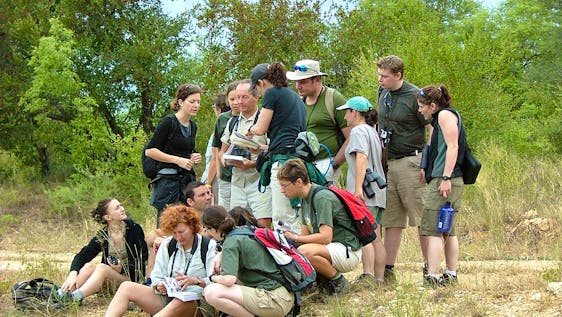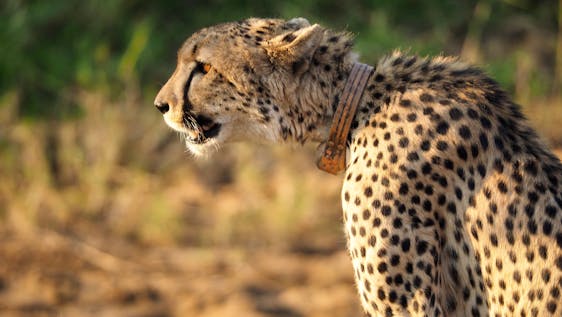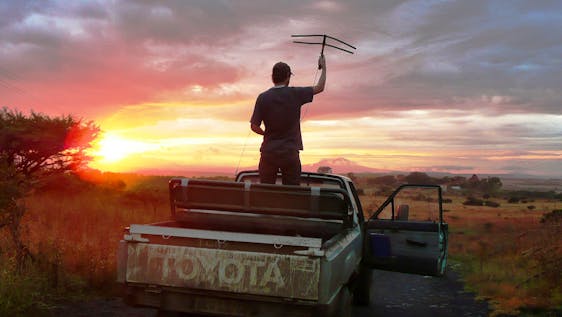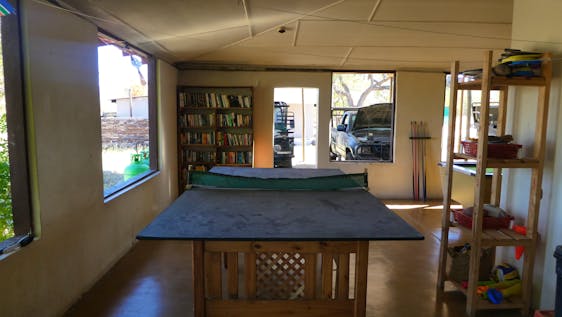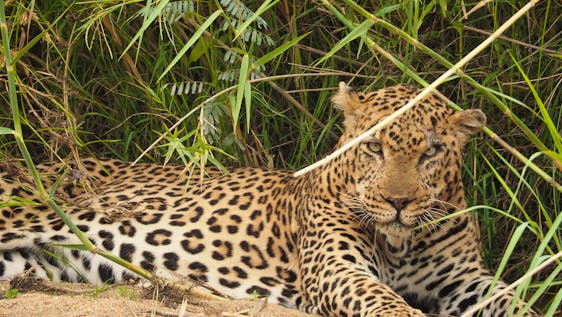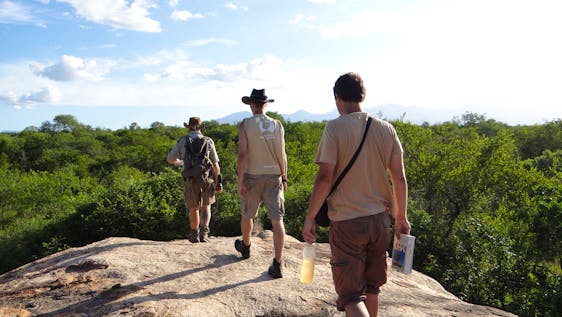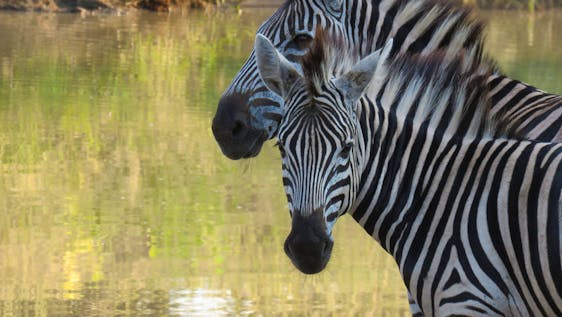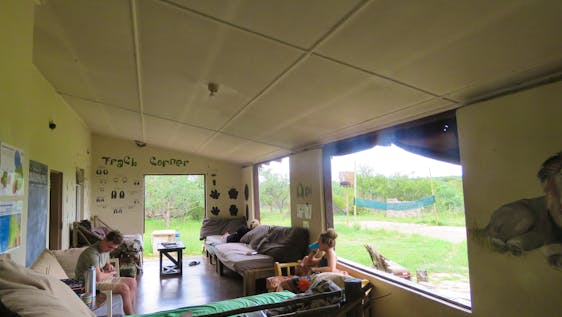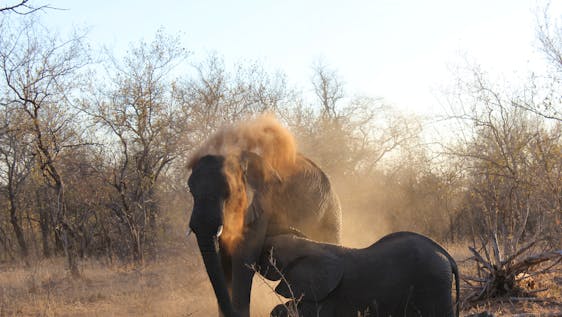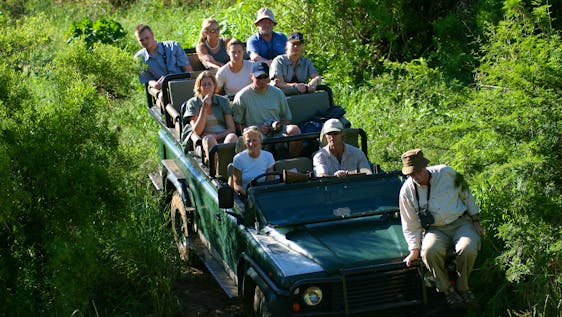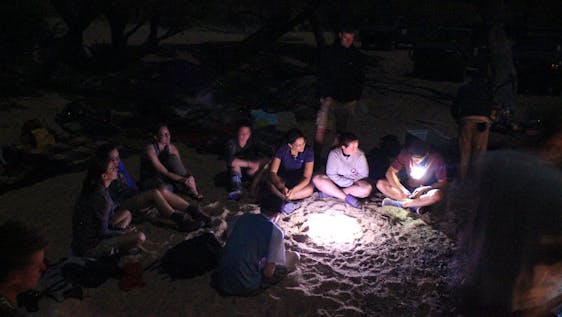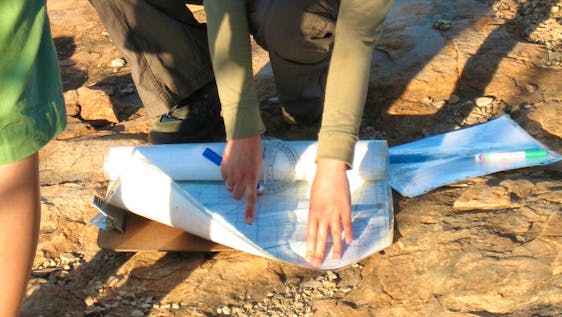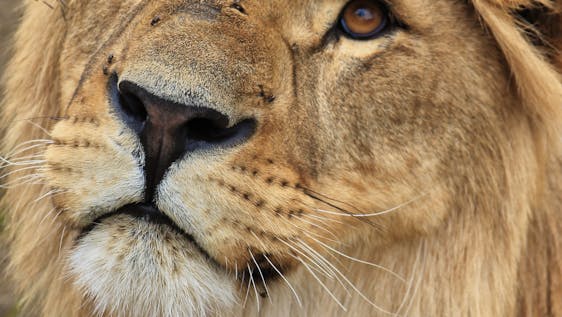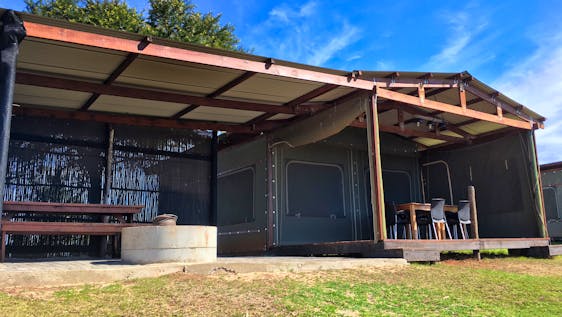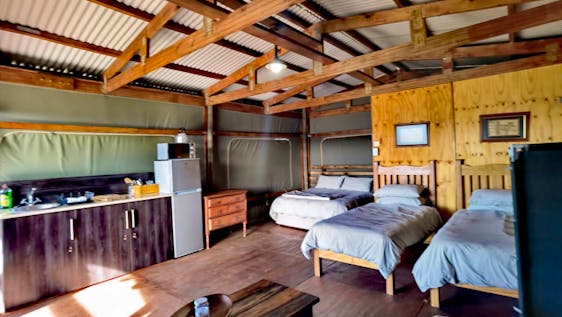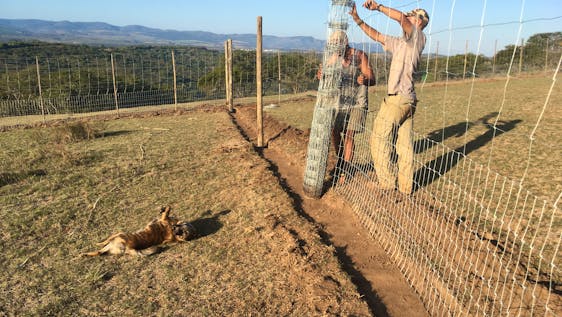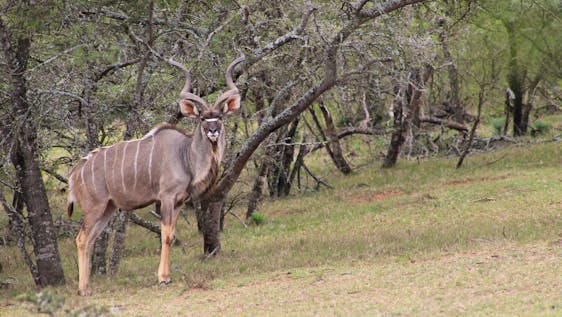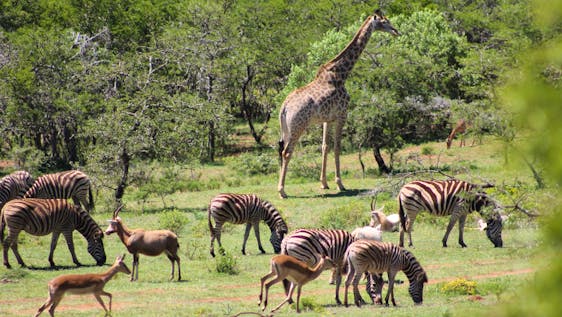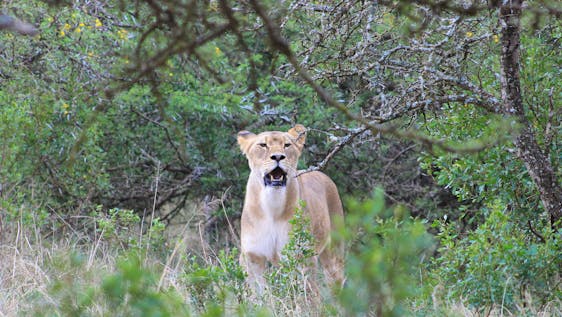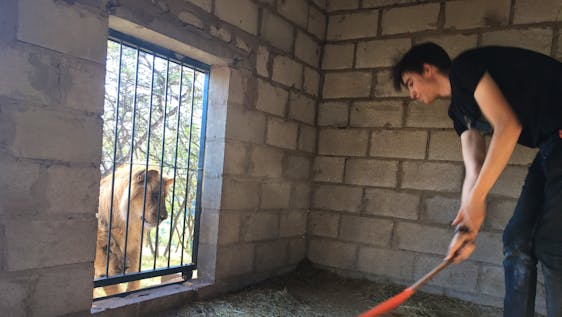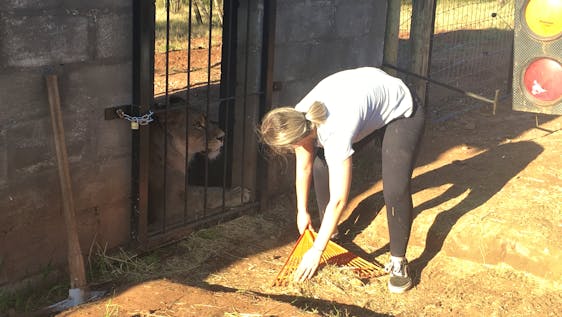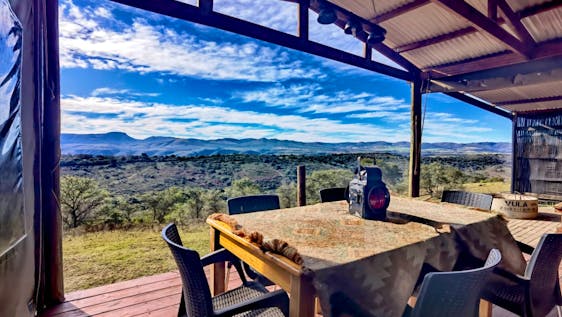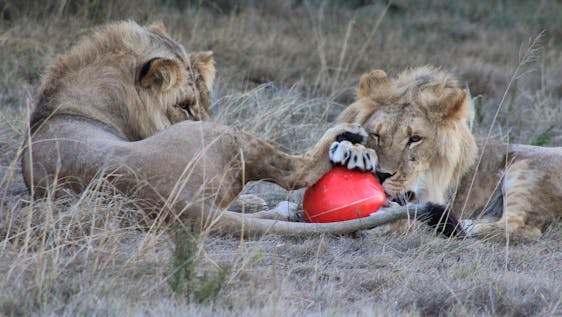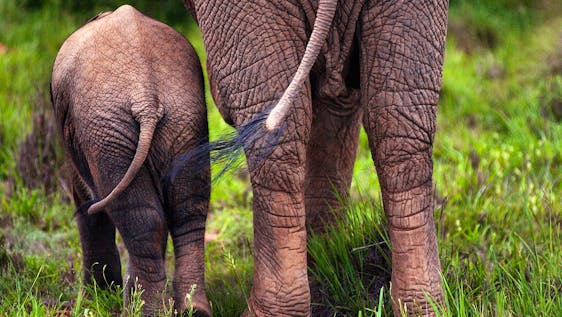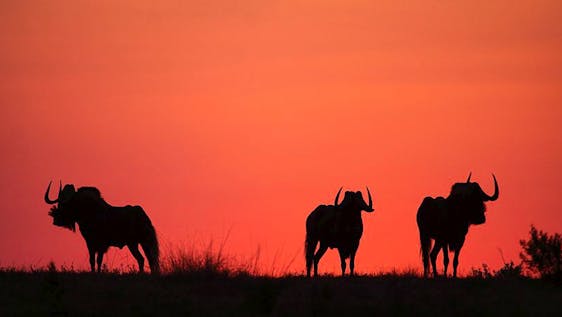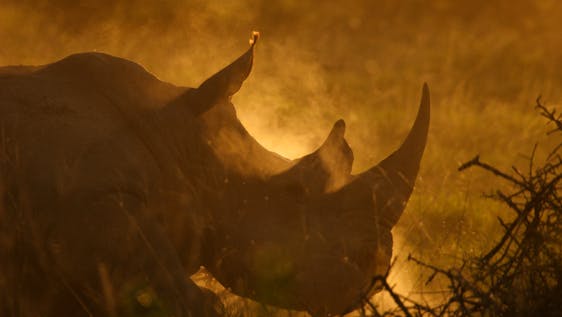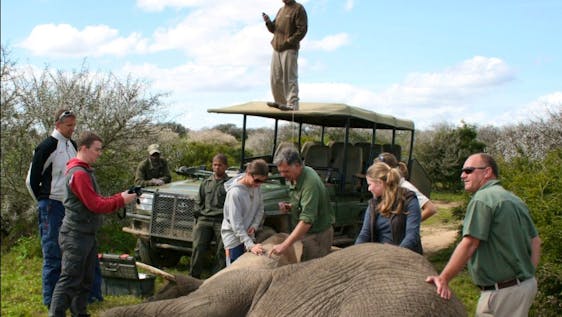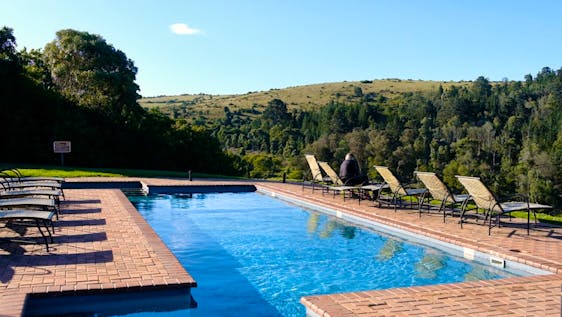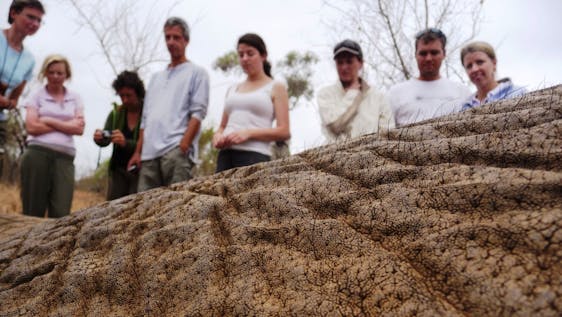Volunteer in South Africa with Animals
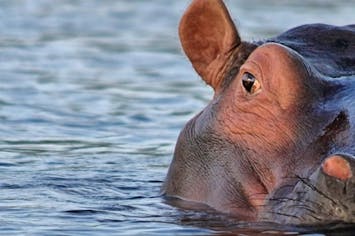
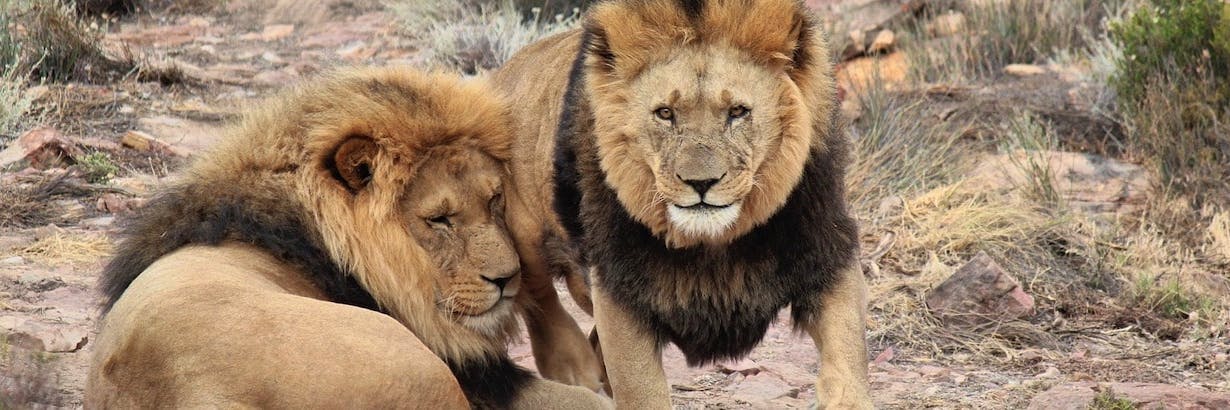
Animal conservation projects in South Africa
You may have heard of South Africa as the home of the “Big Five“ – the elephant, rhino, lion, leopard, and buffalo – but the country at the southernmost tip of Africa has to offer a wide array of other exotic wildlife despite these iconic species. From swift cheetahs in the savanna to clumsy-looking penguins on the shores, to fierce great white sharks in the coastal waters, your volunteer options with South African animals are limitless.
Since the end of apartheid in 1994, the Republic of South Africa welcomes conserving the south african environment and the abundance of flora and fauna is a priority. With over 1,500 protected areas and thousands of conservation projects, there are plenty of volunteering opportunities for you to make a difference and help to save threatened South African animals.
Ever dreamt of living in the bush of Africa surrounded by magnificent creatures you’ve only seen on TV before? Seeking the thrill of coming eye-to-eye with one of the most feared marine animals of all times, the Great White Shark? Then choose South Africa for your next animal volunteering adventure! Exciting wildlife, charming locals, and illustrious landscapes are awaiting you.
Conservation status of South African animals in 2025
From arid deserts to lush forests, to ancient folded mountains: South Africa’s terrain is incredibly diverse, offering great living conditions for many different species of birds, mammals, reptiles, insects, and amphibians.
The country’s internationally renowned nature reserves and national parks, such as the tourist favorite Kruger Park, protect a great variety of threatened animals. However, in some areas, limited resources and human development remain a key challenge for conservation efforts.
What species live in South Africa?
Among the vulnerable animal groups in South Africa are the so-called Big Five. Borrowed from trophy hunting, the term describes five species that are especially difficult and dangerous to catch. Today, the Big Five refers to the main attractions on wildlife safaris - the African elephant, the Cape buffalo, the rhino, the lion, and the leopard. Of course, there are hundreds of other amazing species to be discovered in South Africa. Among them are hippos, cheetahs, giraffes, penguins, great white sharks, and many more. Let’s have a look at some of the most characteristic species you may encounter as a volunteer in South Africa:
African elephant
Averaging a shoulder height of over 3m, the African elephant is the largest land mammal. There are an estimated 415,000 individuals left in the wild migrating between different habitats including savannas, grasslands, and forests in 37 countries in sub-Saharan Africa. Due to extreme population declines over the past century, the species is categorized as vulnerable. However, in Southern Africa herds are recovering and elephant numbers are higher than in other regions. That’s why tourists and volunteers have the opportunity to see large herds of these fascinating creatures in the country’s large national parks.
Cape buffalo
The Cape buffalo is a herbivore commonly found in large herds in woodland savannas as well as lowland rainforests. The massive bovine can reach up to 1.5m of shoulder height and 750kg in weight – yet it can run as fast as 56 km/h. Its massive, ridged horns constitute powerful weapons against predators (mainly lions and humans), which is why a wounded bull is considered extremely dangerous. At a population size of about 900,000 individuals of which three quarters reside in protected areas, this species is not endangered.
African rhino
There are two rhino species in Africa’s most southern country – the white rhino and the black rhino. Both are home to South Africa’s vast grass- and shrublands, where they feed on vegetation such as grasses, leaves, and fruits. While over a million rhinos used to roam Africa’s lands just 150 years ago, today their numbers have declined dramatically. Black rhinos count as critically endangered as their numbers declined by 98% since 1960. There are only about 5,000 of them left in the wild. The white rhino population once assumed extinct, got nursed back to 20,000 individuals and is now classified as near-threatened by IUCN.
With their two massive horns that can grow over 1m long, the prehistoric animal species are vulnerable to poaching. In China, Taiwan, Hong Kong, and Singapore the powdered horns are used for medical purposes. In other countries, people make the horns into ornamental dagger handles. Another reason that makes volunteering in rhino conservation so urgent.
African lion
Lions are fascinating creatures. As an ultimate predator in most sub-Saharan countries, the gracious animals are ferocious and fearless when hunting for large animals such as zebras, buffaloes, and even giraffes. In their living units, the so-called prides, however, they are very communal and take care of each other. The big cats’ strength and speed (lions can leap up to 11m!) can’t save them from the most dangerous predator – the human. Habitat destruction, ecosystem fragmentation, as well as illegal wildlife trade and human-lion-conflict, are driving populations down. Over the past 21 years, the worldwide lion population dropped by 43% to 20,000 animals. South Africa remains one of the best places to see and volunteer with lions in their natural habitat.
African leopard
One of the lion’s direct competitors is the African leopard, one of the nine subspecies of leopards. The most elusive of the big cats is famous for its soft, spotted fur and gracious climbing. When hunting, the carnivore often hides out in trees to look for smaller animals like reptiles, birds, or rodents or bigger prey like baboons and antelopes. To prevent lions and hyenas from stealing their food, leopards often drag their food up a tree to feed safely. In South Africa, these beautiful animals occur near the country’s borders to Namibia, Botswana, Zimbabwe, and Mozambique, as well as in the Cape provinces. Sadly, African leopards are listed as a vulnerable species.
African hippo
The hippo, short for hippopotamus, is a gigantic water-loving mammal that can weigh over 2,400kg. Hippos are native to sub-Saharan Africa occurring mainly in wetland habitats, where they spend up to 16 hours per day in groups of up to 20 animals in the water. Mostly herbivorous, hippos leave the water at night in order to feed on huge amounts of grass. Although hippos look all cute and cuddly they are very aggressive towards humans and – having killed or injured thousands of people already – are therefore considered the most dangerous mammal in Africa.
Worldwide, there are up to 130,000 wild hippos left. Due to the animals’ dependency on freshwater habitat, which puts them at odds with land conversions by humans they are listed as vulnerable by IUCN. In South Africa, the giant mammal occurs in the provinces of KwaZulu-Natal, Mpumalanga, and Limpopo. It has also been reintroduced into the Eastern and Western Cape.
African cheetah
Credited as the fastest animal on land, this black-spotted wildcat can reach over 90km/h when chasing gazelles, impalas, or other prey. Residing in the open plains and savannah woodland, cheetahs use tall yellow grasses to conceal themselves from their prey’s eyes. Since there are other, more powerful carnivores in their habitat, cheetahs need to kill and feed fast before being discovered by their competition. According to IUCN, there are an estimated 7,000 cheetahs left in Africa (4,190 in Southern Africa) and 80 animals in Iran. With such few animals left, volunteering for cheetah conservation becomes all the more important. In South Africa, cheetahs have been spotted in the Northern Province, in Mpumalanga, and the Northern Cape.
African giraffe
Who hasn’t adored this friendly giant snacking on leaves and walking graciously across the plains either on TV or in a zoo? Guess what: it’s even better to see this beautiful mammal in real life! Giraffes are the world’s tallest land animal and can reach heights of over 5m. This is their great advantage: the long-necked animal can feed on tree leaves at heights that are not accessible for other leaf-eaters. A picky eater, the giraffe’s diverse diet consists of about 93 different plant species. Its impressive tongue (up to 45cm long!) can also help to collect seeds and flowers. From desert landscapes to woodlands, giraffes reside in very different habitats. Less than 100,000 wild animals are scattered across sub-Saharan Africa, which is why this species appears on IUCN’s red list as vulnerable.
African penguin
Penguins? Not the first thing that comes to mind when thinking about the country at the southernmost tip of Africa. However, the African penguin is endemic to Namibia and South Africa and considered an endangered species. With only 19,300 pairs left in South Africa, the population decreased by more than 50% since 1979. Feeding mostly on schooling fish like sardines and anchovy, African penguins are threatened by food shortages caused by different prey distribution, commercial fishing, and their competition with the Cape fur seal.
Great White Shark
The Great White Shark is one of the most feared animals on earth thanks to film productions like „Jaws“. Yet, our planet’s largest (known) predatory fish remains quite a mystery. In fact, we know very little about this shark species’ physiology and behavior. The Great White appears out of nowhere and suddenly disappears into the ocean’s depths again. That's why researchers struggle to figure out things like their average lifetime, maturity levels, and gestation periods. It is estimated to reach a maximum size of around 6m and has been seen ripping apart smaller fish like the halibut and larger marine animals like seals and dolphins with their 300 razor-sharp teeth. Since Great White Sharks are rarely seen compared to other shark species, experts assume its population numbers to be small with vulnerabilities such as commercial and sports fishing, revenge killings, degradation of habitats and protective beach nets.
Why are South African animals endangered?
All life in an ecosystem is interconnected. Each species somehow has an impact on another species. Therefore, disrupting the natural balance of an ecosystem can have catastrophic consequences. One key element in South Africa is the predator-prey relationship. Let’s have a look at an example:
As a top predator, the lion feeds on herbivores such as buffalos and zebras. By hunting the weakest individuals, the prey population is kept strong and healthy. If the lion, however, wouldn’t control the numbers of his prey, the food chain would be interrupted and the prey’s population would expand rapidly depleting the natural resources around them. This, on the other hand, would have serious consequences for many other animals as well. The whole food chain would ultimately collapse.
To maintain ecosystem balance, we have to know the challenges these environments are facing. Although each of the different species mentioned above may face individual threats in South Africa, there are some threats all of these species have in common. Let’s check them out!
Habitat loss and fragmentation
With an expanding human population, wildlife in South Africa is facing the same threats as many species around the globe. Forests and grasslands are converted into streets, villages, and fields, shrinking and fragmenting the animals’ habitat. With less room to roam, feeding, drinking, and mating are becoming more and more difficult. Especially animals with wider home ranges like the elephant or the giraffe are threatened by this development. But also less migratory animals like the hippo suffer from human development as rivers and lakes, where these semi-aquatic animals spend most of their days, are diverted to agricultural land.
Illegal wildlife trade
Elephants and hippos are poached for their ivory tusks and their meat. Leopards are killed for their beautiful fur. Lion skins, bones, and other body parts are sold for thousands of dollars. Great White Sharks are hunted for their jaws, teeth, and fins. Rhinos are slaughtered for their horns. Buffalos are shot for their meat.
Despite harsh international regulations on illegal wildlife trade, the black market is booming. Body parts of exotic animals are used for traditional medicine, ceremonial purposes, or decoration. When the demand in other countries (mostly across Asia) surges, numbers of poached animals does, too, as it can bring a lot of money.
Human-wildlife conflict
When human settlements expand into animal territories, conflict is inevitable. Predators like lions living outside of protected areas raid farmers’ stock on the search for food. Farmers, in return, try to kill the predator to prevent further losses. In some livestock areas, farmers prepare poisoned carcasses to get rid of scavenging wild animals.
Herbivores like buffalos and elephants also get caught up in conflict with farmers. Breaking fences and raiding crops can result in unbearable losses for small-scale farmers. Some farmers, however, try peaceful solutions like designing so-called „chili-bombs“, a spicy mix of ingredients that keeps elephants away from crops due to its smell.
Conservation efforts
When you think about doing a wildlife safari, South Africa immediately comes to mind. The country is worldwide renowned for its wonderful and well-managed wildlife reserves and national parks. Since South Africa is home to a wide array of threatened animals and wildlife tourism is booming, conservation is one of the country’s top priorities.
There are many success stories of conservation efforts that helped nurse species at the brink of extinction (like the southern white rhino) back to healthy populations. However, maintaining and patrolling massive national parks and reserves is a huge financial burden. In many cases, the absence of sufficient funds remains a key challenge. Fewer guards in the parks result in less control and more poaching incidents.
Therefore, your volunteer stay in South Africa is very important - for humans and animals! By volunteering, you can support wildlife conservation with your own hands, lighten the burden on local guards, and promote ethical tourism.
Where can I volunteer with animals in South Africa?
South Africa is a large country with an unseen abundance of wild animals. Do you want to promote cheetah or lion conservation? Or do research on Great White Sharks? Or rescue stranded dolphins? Your volunteering opportunities are pretty much endless.
Many volunteer conservation projects working with the Big Five and other wildlife (like cheetahs or giraffes) are located in South Africa’s North-East around one of Africa’s largest game reserves, the famous Kruger National Park. Marine conservation volunteer projects working with sharks, dolphins, penguins, and whales are based near the country’s coastline, where South Atlantic and the Indian Ocean meet one another - between Capetown and Port Elizabeth.
Flights between big cities like Capetown and Johannesburg are cheap, so wherever you will be stationed with your volunteer project it is easy to get around and see the rest of this beautiful country.
How can I help to save animals in South Africa?
The challenges to protect wildlife in South Africa are manifold, but as a volunteer, you can help to tackle them. Whichever animals you decide to work with, know that your work is important and that it will be appreciated.
Your tasks as a volunteer
Do you want to help conserve big cats (including lions, cheetahs, hyenas) or primates at a sanctuary? Then your daily volunteer tasks may include:
- Prepare food (raw meat for the carnivores, vegetation for herbivores) and help to dish it out to the animals in the sanctuary
- Support the release of rehabilitated animals
- Assist animal interaction and training like cheetah runs
- Count and identify animals through tracking devices and camera traps
- Aid the health assessments and recovery of animals in the sanctuary
- Maintain the sanctuary by checking and repairing roads and fences, removing alien vegetation, planting indigenous flora, and cleaning the enclosures
- Develop new eco-friendly visitor paths
- Teach the community a new language or aspects of wildlife conservation
Do you want to volunteer at a nature reserve and work with animals in their natural habitat? Then your day might look a little different:
- Train “bush basics” to survive in the wild, read animal behavior and learn the best methods to approach wild animals
- Monitor the movements, behavior, numbers, kills, and habits of wildlife such as lions, white and black rhino, leopards, elephant, buffalo, giraffes, cheetahs, and hyena
- Go on daily monitoring drives to track and identify animal populations and individual animals
- Support reserve management with work such as bush clearing, road repair, or game capture
Or do you rather want to spend your days close to the ocean and research South African marine life? Then your volunteer work could look like this:
- Profile dolphins’, sharks’, and whales’ unique fins to catalog and identify individuals and their behavior
- Go on beach patrols and rescue stranded animals
- Monitor and assess river and water health
- Organize beach clean ups
- Cage-dive with sharks to observe size, sex, markings, and behavior
- Help treat injured animals
Benefits of volunteering with animals in South Africa
South Africa’s natural and cultural diversity make this country the perfect destination for your volunteering experience. Mix up your days with adrenaline-filled activities and dramatic landscapes to make the most out of your time out of school or office. Here are even more benefits of taking the long trip to South Africa to make your decision to volunteer a lot easier:
- Live in the South African bush: Bring on your best Steve Irwin move and learn how to survive in the wild. Fall asleep to the star-studded desert skies and wake up to the amazing sounds of the bush. What are you waiting for?
- Come eye-to-eye with some of the most fascinating animals on Earth: Watch ferocious lions hunting their prey, observe dangerous hippos floating in the water and swim in the same waters as the dreaded Great White Shark. Adventure is awaiting you!
- Learn the Do’s and Don’ts of wildlife conservation: Preserving and protecting wildlife may sound simple at first, but it’s more complicated than you think. You will witness first hand, how much effort and thought is put into wildlife conservation. Come back as a pro and teach other people how it works!
- Dive into another culture: Get to know South Africa’s ancient tribes, tumultuous history, and unique culture while doing something to preserve our planet’s beautiful wildlife as a conservation volunteer.
- Try surfing with the best conditions in the world: South Africa is known for its world-class surfing. So get out there and catch some waves! You may be sharing the waters with some friendly sharks though. Do you dare?
After learning all these interesting and amazing facts about South Africa’s wildlife and the volunteer opportunities that await you there, you should already be boarding a plane and start your very own volunteer experience!
 Activities
Activities
 Rhino Conservation
Rhino Conservation
 Lion Conservation
Lion Conservation
 Elephant Conservation
Elephant Conservation
 Africa
Africa
 Animal
Animal
 South Africa
South Africa
 Southern Africa
Southern Africa
 Wildlife Conservation
Wildlife Conservation
 Giraffe Conservation
Giraffe Conservation
 Southwest African Lion
Southwest African Lion
 White Rhino
White Rhino
 Antelope Conservation
Antelope Conservation
 Anti Poaching
Anti Poaching
 African Elephant
African Elephant
 African Leopard
African Leopard
 Leopard Conservation
Leopard Conservation
 Bush Elephant
Bush Elephant
 Planting Trees
Planting Trees
 Tiger Conservation
Tiger Conservation
 Southern Giraffe
Southern Giraffe
 Hotspots
Hotspots
 Zebra Conservation
Zebra Conservation
 Buffalo Conservation
Buffalo Conservation
 African Buffalo
African Buffalo
 Safari
Safari
 Cheetah Conservation
Cheetah Conservation
 South African Cheetah
South African Cheetah
 Hyena Conservation
Hyena Conservation
 Mountain Zebra
Mountain Zebra
 Spotted Hyena
Spotted Hyena
 Kudu
Kudu
 Impala
Impala
 Bushbuck
Bushbuck
 National Park
National Park
 Premium
Premium
 Monkey Conservation
Monkey Conservation
 Shark Conservation
Shark Conservation
 Vegan
Vegan
 Bird Conservation
Bird Conservation
 Primate Conservation
Primate Conservation
 Whale Conservation
Whale Conservation
 Animal Sanctuary
Animal Sanctuary
 Port Elizabeth
Port Elizabeth
 Baboon
Baboon
 Dolphin Conservation
Dolphin Conservation
 Caracal Conservation
Caracal Conservation
 Plains Zebra
Plains Zebra
 Caracal
Caracal
 Marine Life
Marine Life
 Great White Shark
Great White Shark
 Jackal Conservation
Jackal Conservation
 Horse
Horse
 Mako Shark
Mako Shark
 Mongoose
Mongoose
 Mongoose Conservation
Mongoose Conservation
 Vervet Monkey
Vervet Monkey
 African Penguin
African Penguin
 Ray Conservation
Ray Conservation
 Animal Shelter
Animal Shelter
 Diving
Diving
 Diving certificate
Diving certificate
 Meerkat Conservation
Meerkat Conservation
 Meerkat
Meerkat
 Southern Right Whale
Southern Right Whale
 Bottlenose Dolphin
Bottlenose Dolphin
 Humpback Whale
Humpback Whale
 Common Dolphin
Common Dolphin
 Nyala
Nyala
 Owl
Owl
 Street Animals
Street Animals
 Horse Sanctuary
Horse Sanctuary
 Marmoset
Marmoset
 Wildcat Conservation
Wildcat Conservation
 Reptile Conservation
Reptile Conservation
 Crocodile
Crocodile
 Eagle
Eagle
 Duiker
Duiker
 Tortoise Conservation
Tortoise Conservation
 Giant Tortoise
Giant Tortoise
 Macaw
Macaw
 Kangaroo Conservation
Kangaroo Conservation
 Wallaby
Wallaby
 Cockatoo
Cockatoo
 Blesbok
Blesbok
 Parrot
Parrot
 Waterbuck
Waterbuck
 Dog
Dog
 Cape Town
Cape Town
 Cats
Cats
 Common Warthog
Common Warthog
 Waste Reduction
Waste Reduction
 Shark Tagging
Shark Tagging
 Thresher Shark
Thresher Shark
 Sting Ray
Sting Ray
 Ragged Tooth Shark
Ragged Tooth Shark
 Hammerhead Shark
Hammerhead Shark
 Beach Cleaning
Beach Cleaning
 African Wild Dog Conservation
African Wild Dog Conservation
 Elephant Research
Elephant Research
 Honey Badger
Honey Badger
 Elusive Pangolin
Elusive Pangolin
 Hippo Conservation
Hippo Conservation
 Kruger National Park
Kruger National Park
 Intern Abroad
Intern Abroad
 Veterinary Training
Veterinary Training
 Transvaal Lion
Transvaal Lion
 Aardvark
Aardvark
 Tubulidentata Conservation
Tubulidentata Conservation
 Otter Conservation
Otter Conservation
 Giant Otter
Giant Otter
 Bat
Bat
 Golden Jackal
Golden Jackal
 Amur Tiger
Amur Tiger
 Side-striped Jackal
Side-striped Jackal
 Manta Ray
Manta Ray
 Tamarin
Tamarin
 Squirrel Monkey
Squirrel Monkey
 Capuchin Monkey
Capuchin Monkey
 Lemur
Lemur
 Macaque
Macaque
 Patas Monkey
Patas Monkey
 Johannesburg
Johannesburg
 Knysna
Knysna
 Husky
Husky
 Wolf Conservation
Wolf Conservation
 Grey Wolf
Grey Wolf
 Northwest African Cheetah
Northwest African Cheetah
 Günthers Dik-Dik
Günthers Dik-Dik
 Plettenberg Bay
Plettenberg Bay
 Chameleon
Chameleon
 Sugar Glider Conservation
Sugar Glider Conservation
 Leopardus Conservation
Leopardus Conservation
 Orca
Orca
 Ocelot
Ocelot
 Victoria Falls
Victoria Falls
 Pelagic Shark
Pelagic Shark
 Tanzanian Cheetah
Tanzanian Cheetah
 Plastic Reduction
Plastic Reduction
